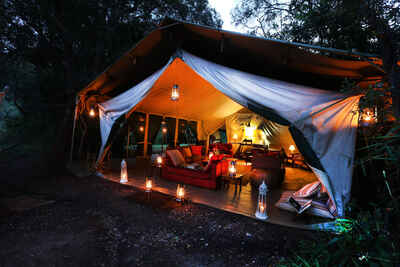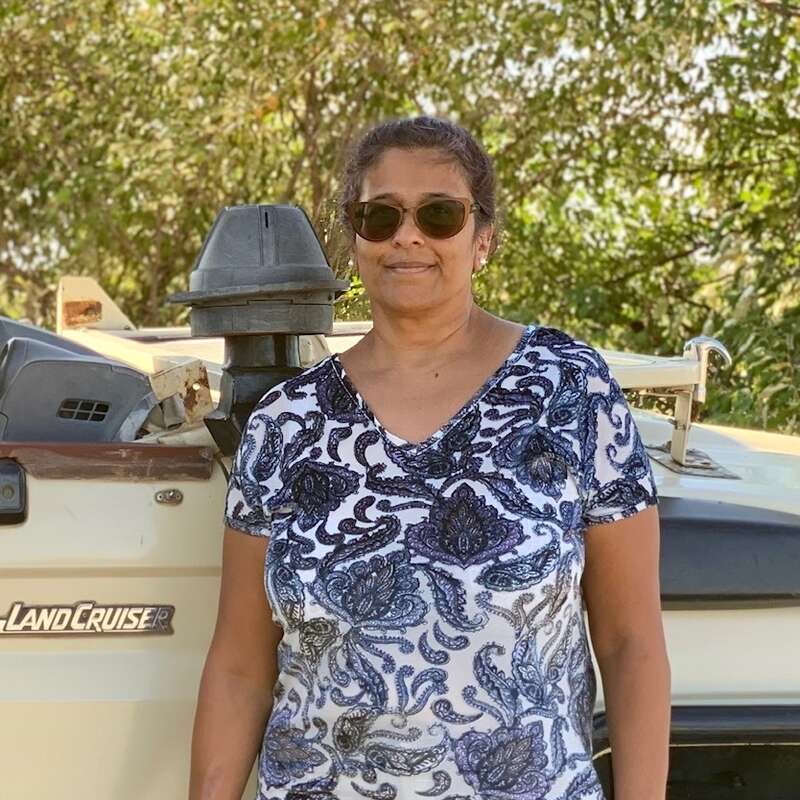About Nairobi Tented Camp
Nairobi Tented Camp has been relocated outside of the Nairobi National Park - please ask for further details.
The only accommodation inside Nairobi National Park, Nairobi Tented Camp opened in 2010. A traditionally styled camp of large tents, it's located in a hilly, densely wooded area of fig, ebony and wild olive trees on the west side of the park, close to several popular south-west Nairobi attractions.
We were excited to hear about the opening of Nairobi Tented Camp and it doesn’t disappoint. There’s a lot to be said for transferring straight from the airport into the bush, and as a first or last night in Kenya it offers an experience that no Nairobi hotel can match. The food, service and remarkable location make it one of the best options available for a stay in the city.
Our view
We were excited to hear about the opening of Nairobi Tented Camp and it doesn’t disappoint. There’s a lot to be said for transferring straight from the airport into the bush, and as a first or last night in Kenya it offers an experience that no Nairobi hotel can match. The food, service and remarkable location make it one of the best options available for a stay in the city.
Accommodation
8 tents
Children
Fine for 8+
Open
All year
Activities

4WD Safari

Birdwatching

Cultural excursion

Elephant encounter
Traveller reviews of Nairobi Tented Camp
5 real, un-edited reviews from Expert Africa's travellers.
Arrived 17 Feb 2019, 1 nights
"Nairobi Tented Camp review"
Overall rating: Excellent
Arrived 6 Aug 2018, 1 nights
"Nairobi Tented Camp - a work in progress"
Overall rating: Average
Arrived 21 Jan 2016, 1 nights
"Back to Nature!"
Overall rating: Excellent
Arrived 11 Jan 2016, 2 nights
"Good place to start or end your safari"
Overall rating: Excellent
Arrived 9 Oct 2015, 1 nights
"Nairobi Tented Camp review"
Overall rating: Excellent
Arrived 12 Dec 2014, 1 nights
"Nairobi Tented Camp"
Overall rating: Good
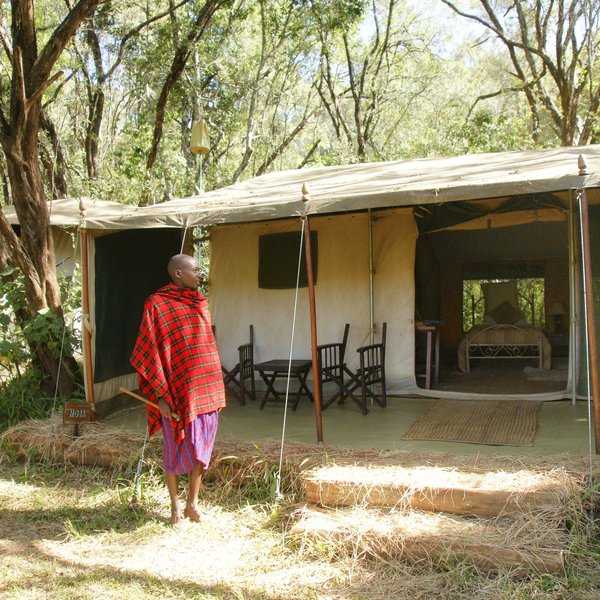
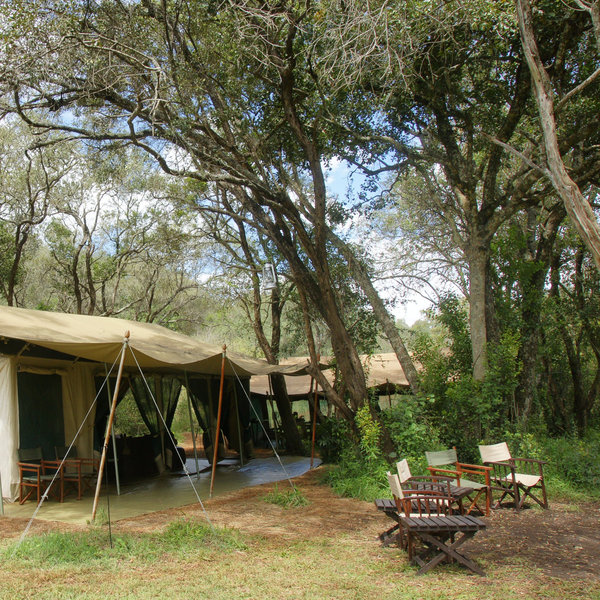
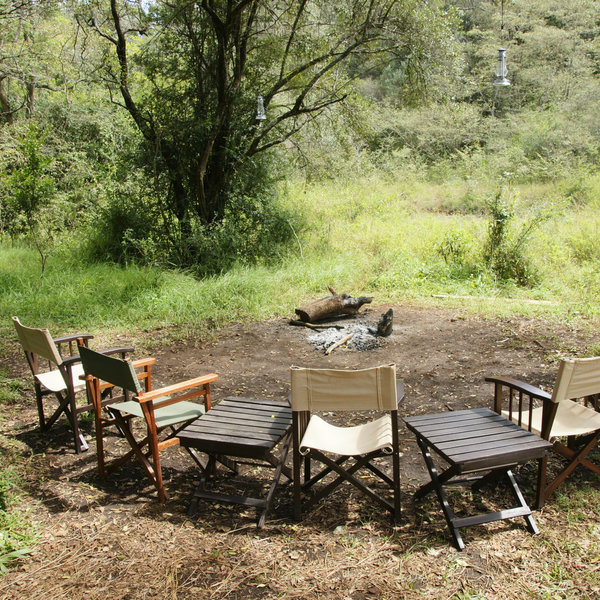
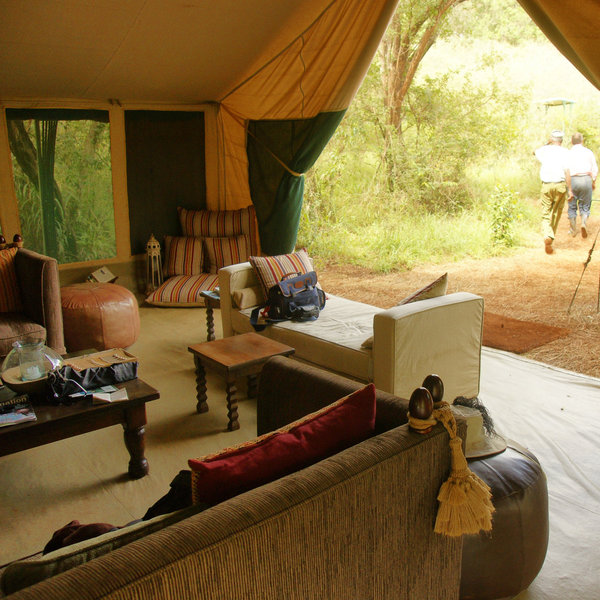
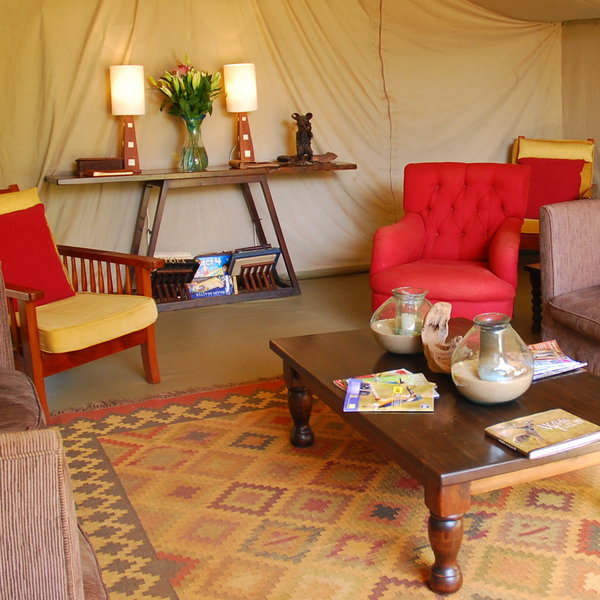
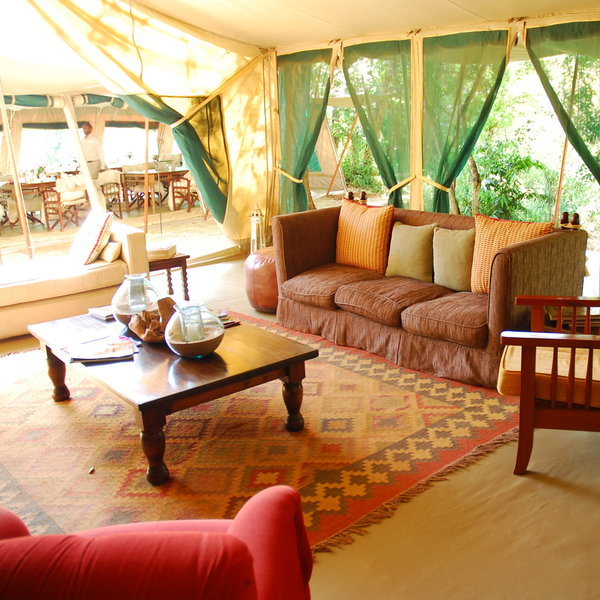
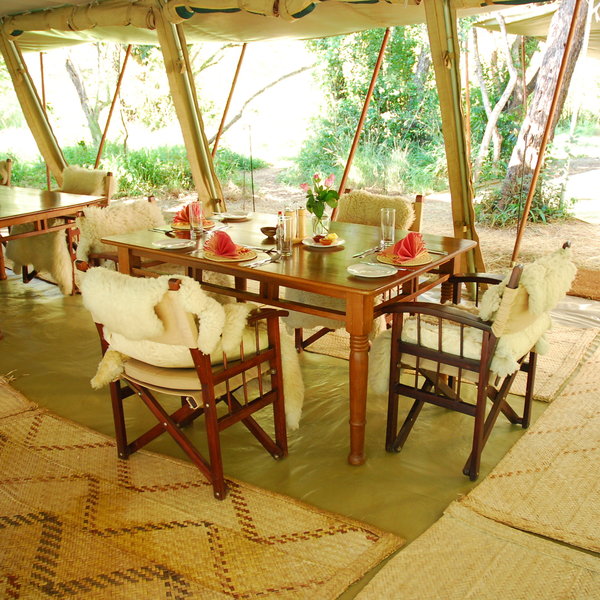
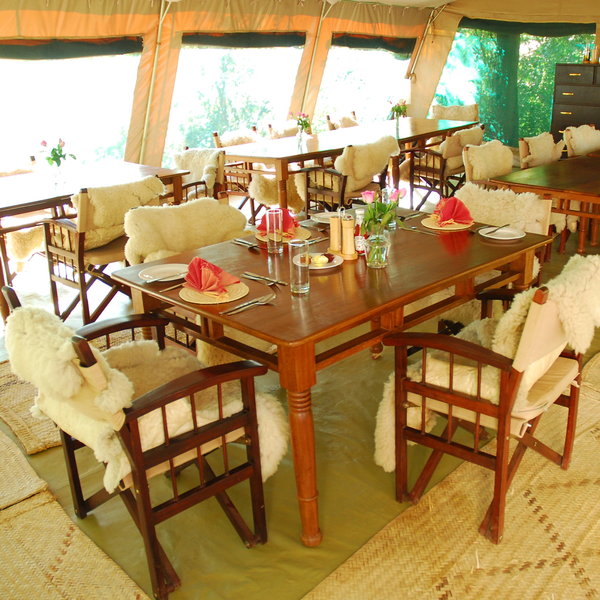
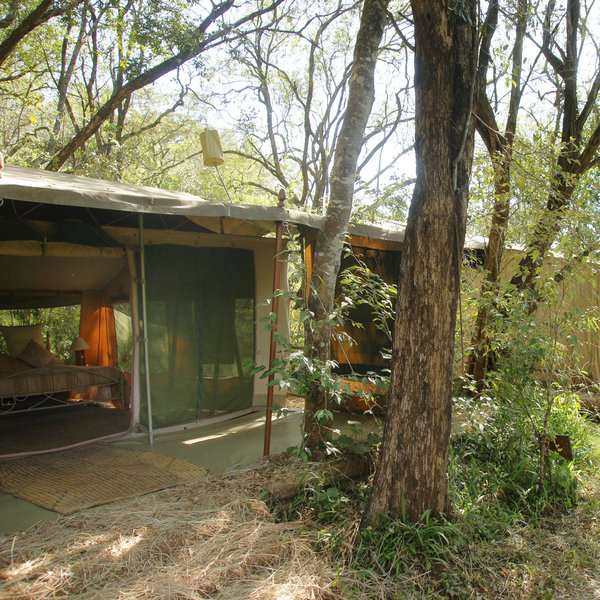
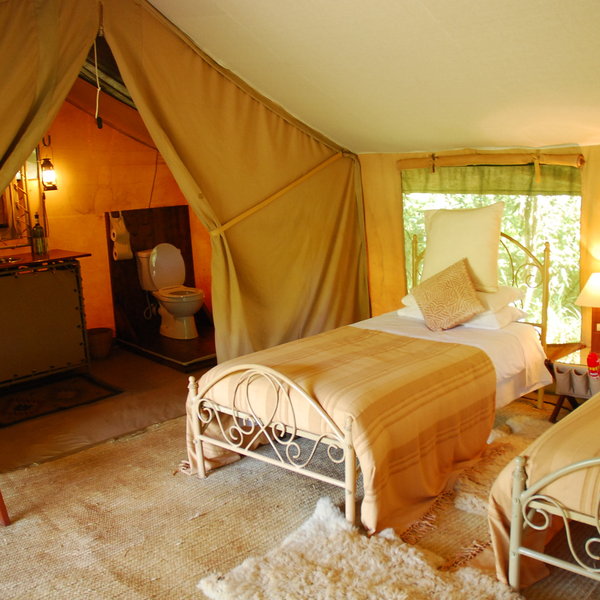
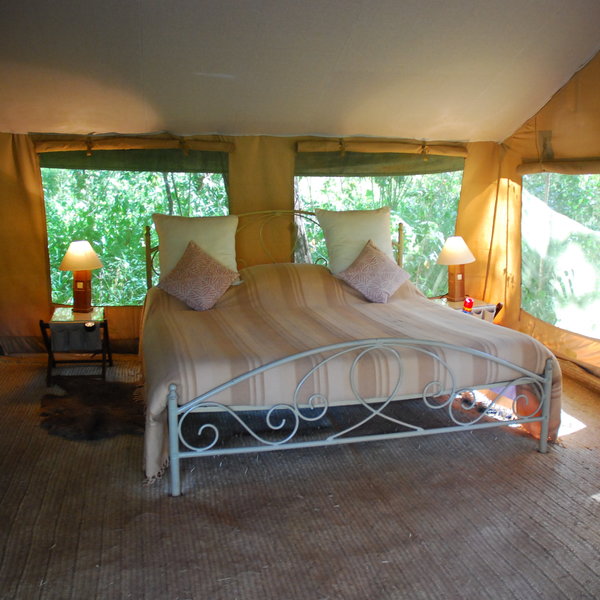
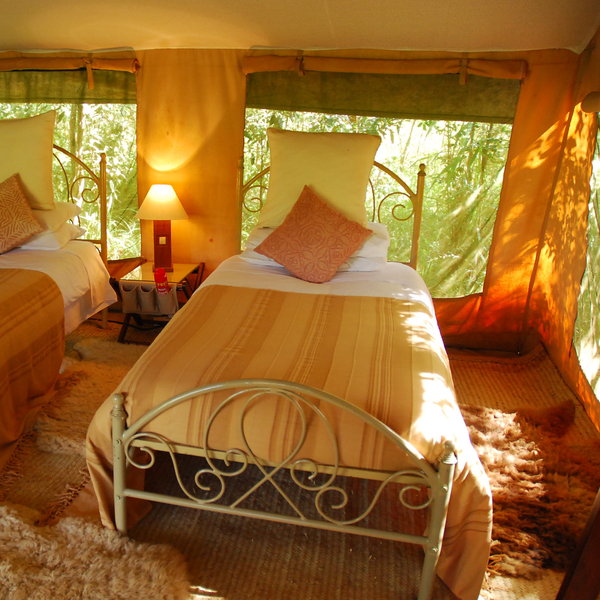
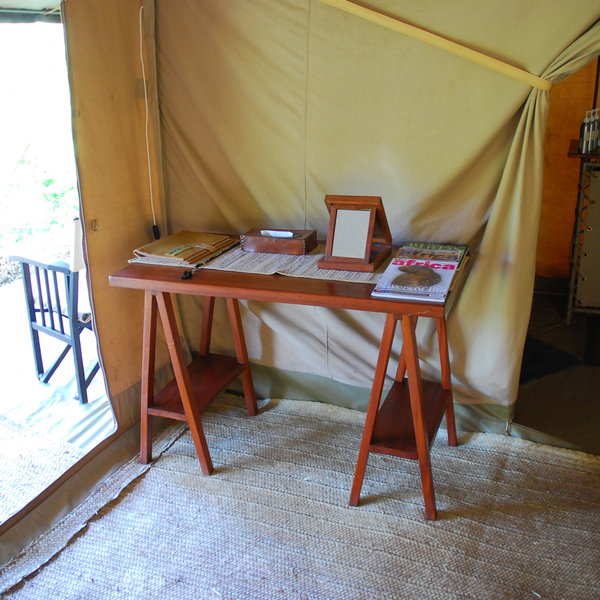
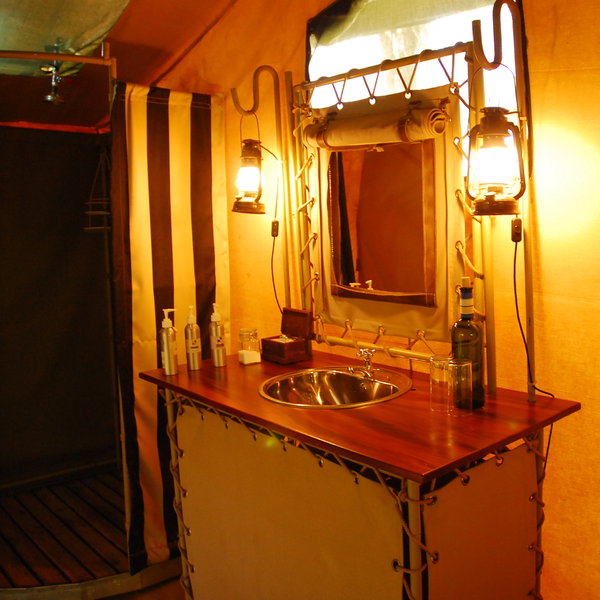
Expert Africa's gallery
When we travel we take lots of photos ourselves to give you a real and un-edited view of the safaris. See our 59 pictures of Nairobi Tented Camp to get the candid view.
View galleryNairobi Tented Camp: Our full report
Nairobi Tented Camp has been relocated outside of the Nairobi National Park - please ask for further details.
The only accommodation inside Nairobi National Park, Nairobi Tented Camp opened in 2010. A traditionally styled camp of large tents, it's located in a hilly, densely wooded area of fig, ebony and wild olive trees on the west side of the park, close to several popular south-west Nairobi attractions.
The major advantage of staying at Nairobi Tented Camp, apart from the beautiful environment itself, is being able to transfer to and from either Wilson domestic airport or Jomo Kenyatta International (JKIA) without having to struggle through the Nairobi traffic. Nairobi Tented Camp is permitted to do night transfers through the park, so there is a lot of flexibility.
An alternative overnight or day-room option in the park area would be the beautiful Emakoko which straddles the southern park boundary. With its sumptuous rooms and pool, it offers a completely different stay – much more of a hotel-style lodge.
The approach to Nairobi Tented Camp is off the plains and up a bumpy trail though the forest. Vehicles are left in a clearing and you do the last 200m from the parking area on foot, with traditionally dressed Maasai warriors carrying your bags. As always, their garb is everyday wear, not put on for show; they normally switch to Western clothes for a trip to the city. As the camp is unfenced, the Maasai askari team will escort you everywhere, as dangerous wildlife does wander into camp on occasions.
Nairobi Tented Camp’s lounge and mess tents are set in a clearing, where big forest trees lend shade and troops of monkeys periodically use the canvas roofs as a trampoline to bounce from one tree to the next. There’s a nicely laid-out dining tent, with grass mats on the floor and sheepskins thoughtfully added to the standard folding wood-and-canvas dining chairs around large dining tables, where guests often eat together. Two steps away is the lounge tent – cosily furnished with a big Indian carpet, deep sofas and armchairs – which also serves as reception.
Behind the lounge and mess is the fire pit, where guests gather before dinner to talk about the day – and after dinner to talk a bit more, and to listen to the African night.
There are also hammocks for lazy afternoon siestas where you can sleep off lunch – before filling up again on tea and cakes before your afternoon game drive.
Set among the trees, Nairobi Tented Camp has eight good-sized tents, which are accessed via a gently rising earth footpath that passes right in front of them (and obviously has an impact on privacy). The tents are pitched lengthways, which allows for a long entrance and veranda (with a table and directors’ chairs) and makes them feel extra spacious, but they are relatively close together – a little too close for complete privacy. They’re well provided with large mosquito-screen ‘windows’, with roll-up blinds. The tents are normally configured as four doubles and four (fairly narrow) twins, but this can be flexible.
Inside, the floors are laid with soft grass-fibre matting and sheepskins – a cosy touch in a location that gets chilly at night and in the early mornings, especially in Nairobi’s July and August ‘winter’ season. A hot-water bottle is popped under the covers while you’re at dinner. Along with wrought-iron beds flanked by bedside tables and bedside lights, you’ll also find a small writing table, and a simple clothes hanger.
Bathrooms include a stainless-steel washbasin in a camp-style vanity unit, safari showers (i.e. hot bucket showers available when required) and modern flush loos. The toiletries provided, all locally made in Nanyuki, include shampoo, conditioner, soap and body lotion.
You’ll be woken at your chosen time, with tea or coffee and biscuits and the wonderful dawn chorus of the surrounding woods. Driving out of the woods into the savanna of the park as the sun rises, keeping a sharp eye out for a leopard, is as exhilarating an experience as anywhere in Kenya, and one of the standard activities at the camp. Nairobi National Park is a vastly underrated area and has a lot more to offer than its classic skyscrapers-and-wildlife landscapes. Morning and evening game drives can be included at Nairobi Tented Camp if you don’t have a flight to catch.
The camp has excellent guides and spotters and you have a very realistic chance of seeing several dozen species over the course of a couple of drives, including some of the park’s impressive black and white rhino (we saw a female black rhino with calf with a dramatically sweeping top horn that was the biggest we’ve ever seen on a Kenyan rhino). Other frequently seen denizens of the park are its many giraffe, zebra, buffalo, wildebeest and eland, and its famous lions – often spotted hunting or consuming a kill. There are no elephants here, which is just as well for the preservation of the forests, but most other savannah species are present, including hippos, crocodiles, pythons and leopard tortoises, all of which we saw on our last visit.
The camp is close to the David Sheldrick Wildlife Trust Elephant orphanage (5km; daily visits at 11.00am as an alternative to a morning game drive) and, outside the park, the AFEW Giraffe Centre at Giraffe Manor (9km), both of which are extremely popular with children. There’s also the interesting Karen Blixen Museum (10km). If you want to explore Nairobi further, or have other things to do in the city, then Nairobi Tented Camp is convenient for most areas.
Activities
4WD Safari
Birdwatching
Cultural excursion
Elephant encounter
Families & children
- Attitude towards children
- 'Children of all ages are welcome at Nairobi Tented Camp.'
- Property’s age restrictions
- Not a present.
- Special activities & services
- None, although the very popular Sheldrick elephant orphans are just 20 minutes’ drive away.
- Equipment
- No.
- Generally recommended for children
- Nairobi Tented Camp is not an ideal place for children, though the camp is happy to welcome them. There’s thick bush all around, and big game, making it necessary to supervise little ones constantly.
Food & drink
- Usual board basis
- Full Board & Activities
- Food quality
- The meal schedule at Nairobi Tented Camp is flexible, depending on guests’ requests and requirements. Being based in Nairobi, the camp can obtain a fantastic variety of food and offers a very diverse range for a small safari camp.
Breakfast consists of fruit, cereal, cooked breakfast, homemade jams. The morning drive normally sets off at around 6.15am, so breakfast can be eaten during the drive (in which case it’s packed as a picnic) or on your return, when you’ll have a big appetite and time to sleep if off – before lunch…
Lunch is normally a buffet. When we stayed in 2012 it included pork chops with sage and roast potatoes, oriental noodles, baked mushrooms with herb and ricotta stuffing, vegetarian pumpkin risotto and homemade bread – quite a feast in other words.
Dinner was a three-course service. We started with an aubergine and tomato ‘tower’, with a yoghurt-pesto drizzle, followed by excellent beef paupiettes, mash and baby spinach (there was an alternative of vegetarian parmesan gnocchi), and griddled pineapple with a mint syllabub for dessert. - Dining style
- Group Meals
- Dining locations
- Indoor and Outdoor Dining
- Further dining info, including room service
- No
- Drinks included
- Soft drinks are included.
Alcoholic drinks are extra, but reasonably priced, eg US$5 for local beer or a glass of house wine.
Our travellers’ wildlife sightings from Nairobi Tented Camp
Since mid-2018, many of our travellers who stayed at Nairobi Tented Camp have kindly recorded their wildlife sightings and shared them with us. The results are below. Click an animal to see more, and here to see more on our methodology.

100% success

100% success

100% success

50% success

50% success

0% success

0% success

0% success

0% success

0% success

0% success

0% success

0% success

0% success

0% success
Getting there
- Location
- Nairobi, Kenya
- Ideal length of stay
- 2 nights
- Directions
- 50 minutes’ drive from Jomo Kenyatta International Airport (JKIA); 30 minutes from Wilson – half on tarmac to the gate, then the other half on earth roads in the park.
- Accessible by
- Fly-and-Transfer
Sustainability

A unique camp built with a sustainable foundation
Renowned for being the first eco-luxury accommodation located in the only protected area in the world close to a capital city, Nairobi Tented Camp is a unique and engaging destination that connects guests with vibrant culture, secluded landscapes and authentic wilderness. As the only accommodation of any sort to be allowed to exist in Nairobi National Park, the camp has the great responsibility of operating sustainably, so that it has a minimal ecological footprint. Perhaps the most visible efforts in this sense stand in the way each of the camp’s nine guest tents have been built.
Located deep within a riverine forest, each tent has its own toilet and hot bucket showers, with hot hater heated, on request, over a log fire. Moreover, low watt LED lights have been placed all around the camp, including guests’ rooms, and run off rechargeable batteries and solar panels instead of electricity. Additionally, each tent is provided with gas and kerosene lanterns, as well as torches. Also, during dinners, tables are set up with candles and lanterns. This not only help the camp save energy, but it also allow tourists to enjoy and authentic camp experience as well as the romance of the African bush at nighttime.
Nairobi Tented Park therefore offers an unparalleled experience in between open plains and the urban city centre. It allows tourists to indulge in an authentic African experience and connect with wildlife whilst managing to maintain a minimal footprint, and for that it has been awarded with TripAdvisor’s Certificate of Excellence in 2018.
See more great sustainability projects in Kenya
Communications
- Communications
- There’s WiFi in all tents and main areas, with a computer that guests can use, but there’s no cellphone reception in camp.
- TV & radio
- None.
Health & safety
- Malarial protection recommended
- Yes
- Medical care
- It’s 15 minutes’ drive to the nearest medical clinic with a doctor.
- Dangerous animals
- High Risk
- Security measures
- As well as Maasai askaris, the camp is guarded by armed KWS rangers at night
- Fire safety
- There are fire extinguishers in main areas and between every two tents.
Useful info
- Disabled access
- On Request
- Laundry facilities
- No Laundry Facilities
- Money
- Cash payments may be made in US dollars, euros, pounds sterling or Kenyan shillings. Visa and MasterCard credit cards are accepted with a 5% surcharge.
- Accepted payment on location
- The only tented camp inside Nairobi National Park is a luxury tented camp set in a thick grove of fig, ebony and wild olive trees in the western end of the park.
Plan and book your trip with Expert Africa
All of our trips are tailor-made, so we'll always adapt them to suit you. Talk to an Expert and let us plan and arrange your perfect trip.

Talk to an Expert
Call or email us now! We’ll match you with the Specialist in our team who is best suited to help you. Then together we can start planning your trip.

Set up your itinerary
Based on our experience and your ideas, your specialist will create a detailed, costed itinerary. We’ll refine it together, until we have a trip that you’re perfectly happy with.

Prepare for your trip
The same Specialist will make the seamless arrangements for your trip, send you detailed travel documents, and be available to answer any questions before you depart.

Travel with peace of mind
After you set off, you’ll be cared for by our partners in Africa, most of whom have worked with Expert Africa for decades. And if you ever need us urgently, we’re available 24/7.

When you return
We love to learn about your trip, and so will always be grateful if you’ve the time to give feedback to your Specialist when you return.
Nairobi Tented Camp's location
Look closer at the environment and surroundings of Nairobi Tented Camp.
Excursions from Nairobi Tented Camp
Optional extra day-trips and excursions possible whilst you're staying at Nairobi Tented Camp. Talk to us: these are usually best arranged before you go.
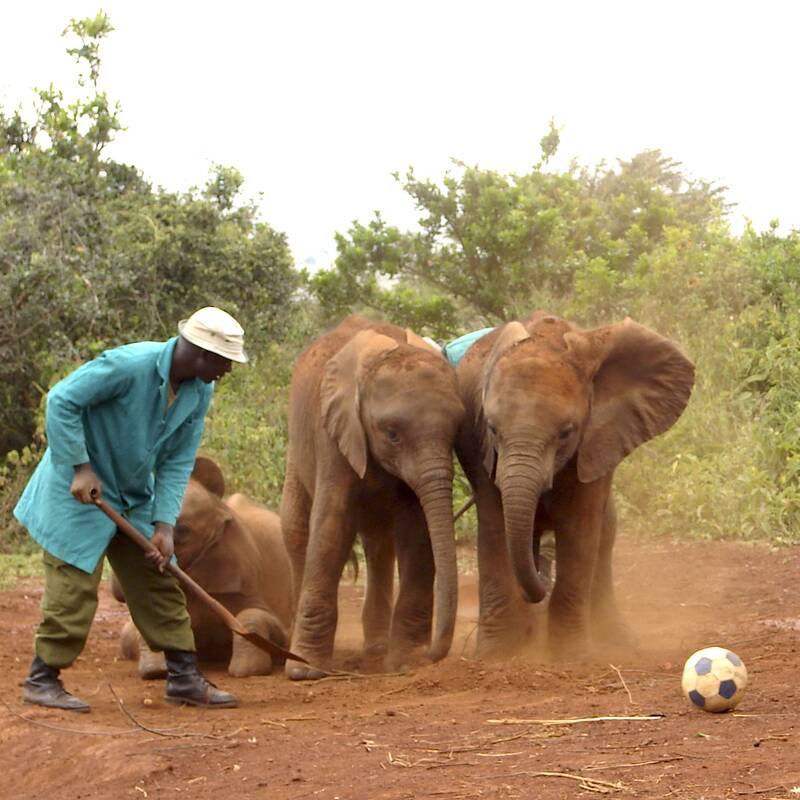
Nairobi Elephant Orphanage visit
One hour, by pre-booking only
Visit the Sheldrick Wildlife Trust Elephant Orphanage for a close-up encounter with elephant orphans – and sometimes rhino orphans. You can visit during daily between 11:00 and 12:00, or make special arrangements for a private visit in the afternoon.
More about Elephant Orphans visit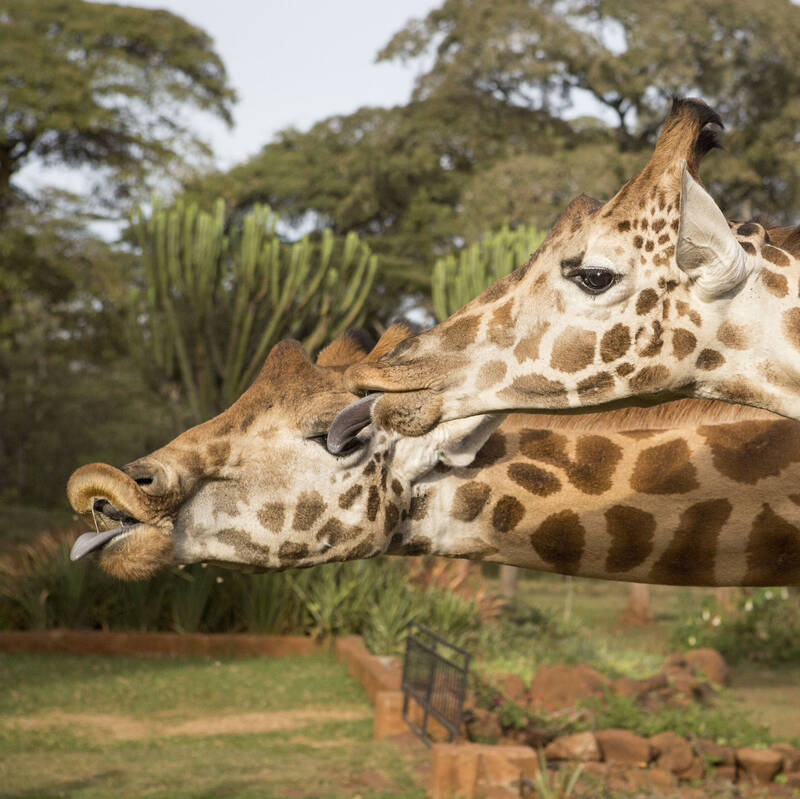
Nairobi Giraffe Centre visit
One hour visit is generally recommended
Visit the AFEW Giraffe Centre for an eyeball-level encounter with gentle Rothschild giraffes. They visit this tree-level platform to be fed pellets.
More about Giraffe Centre visit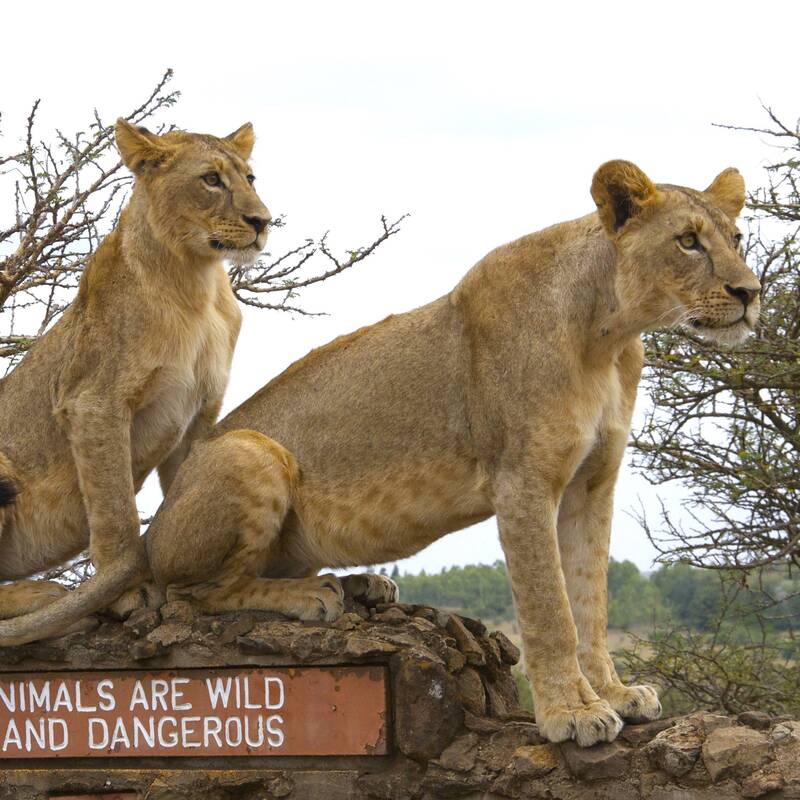
Safari in Nairobi National Park
Half day - AM or PM, or full day
It is truly remarkable that the plains and woodland of Nairobi National Park, an area of around 70km² (some 17,000 acres) should exist in a near-natural state so close to the city that in any other conurbation they would just be suburbs.
More about Nairobi Nat. Park SafariOther lodges in Nairobi
Alternative places to stay in this same area.
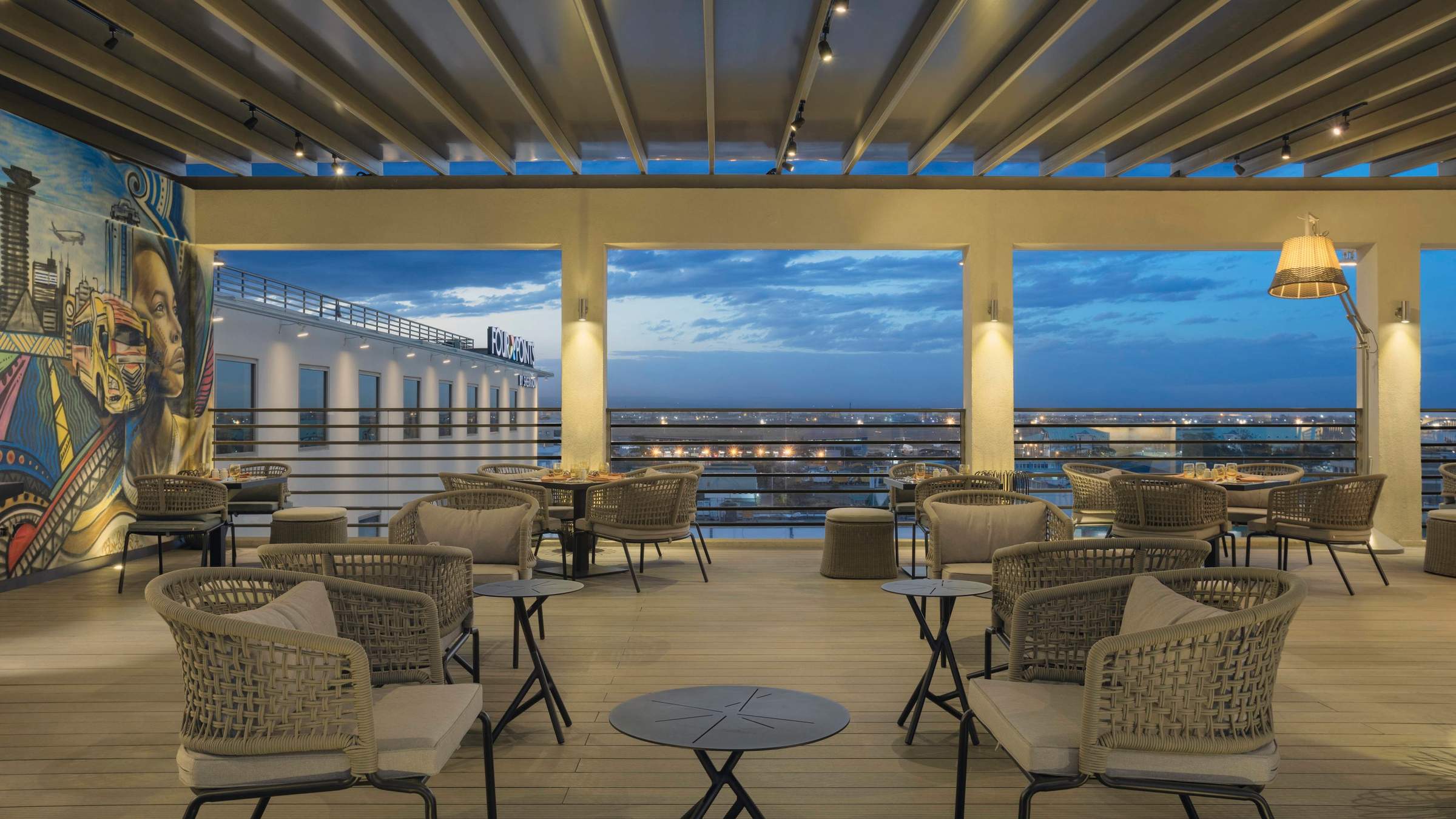
Four Points Nairobi Airport
The Four Points by Sheraton, set within the perimeter of Nairobi International Airport, is ideally located for a first or last night in Kenya.
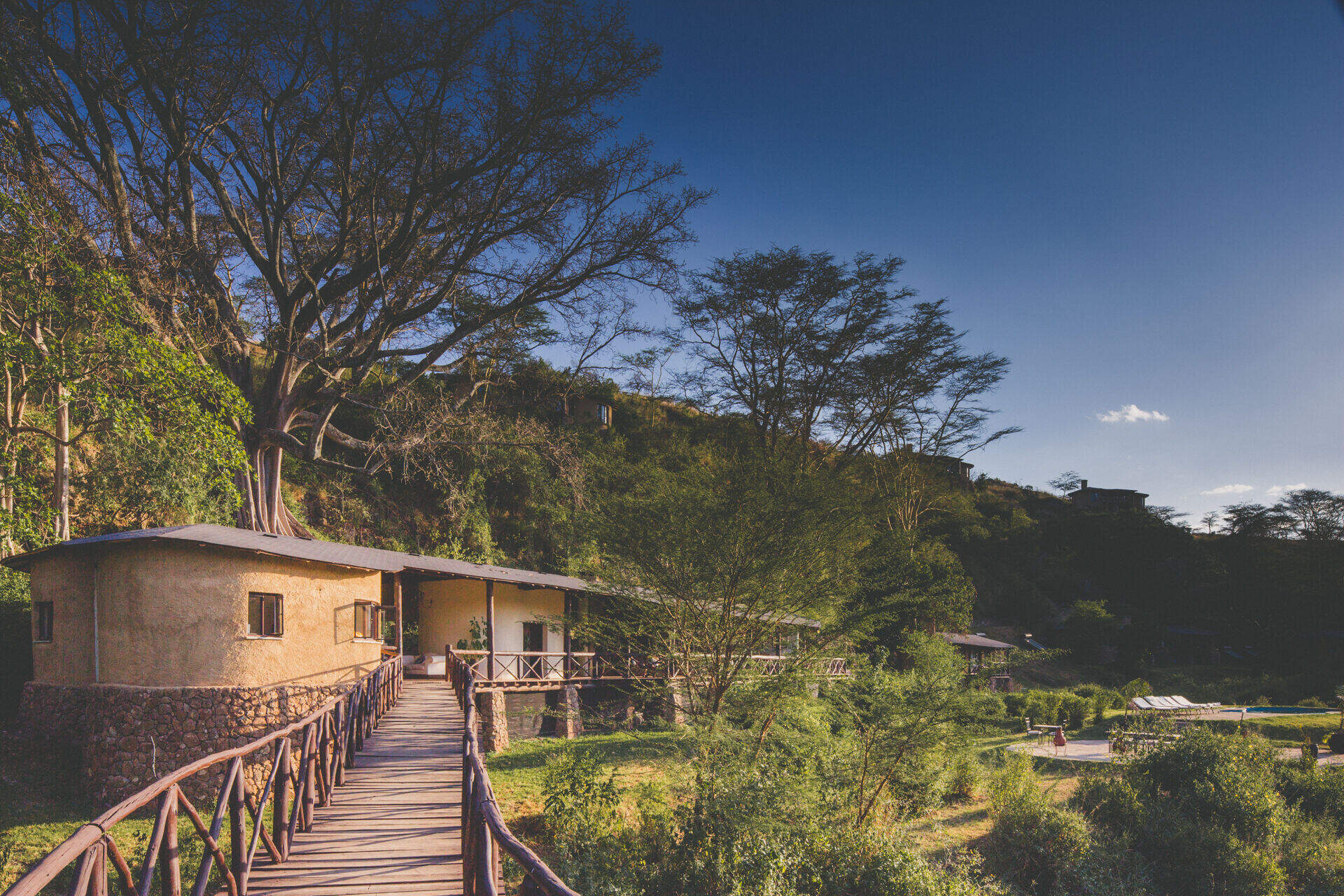
The Emakoko
The Emakoko is a luxurious, owner-managed safari lodge in a beautiful gorge on the edge of Nairobi National Park.
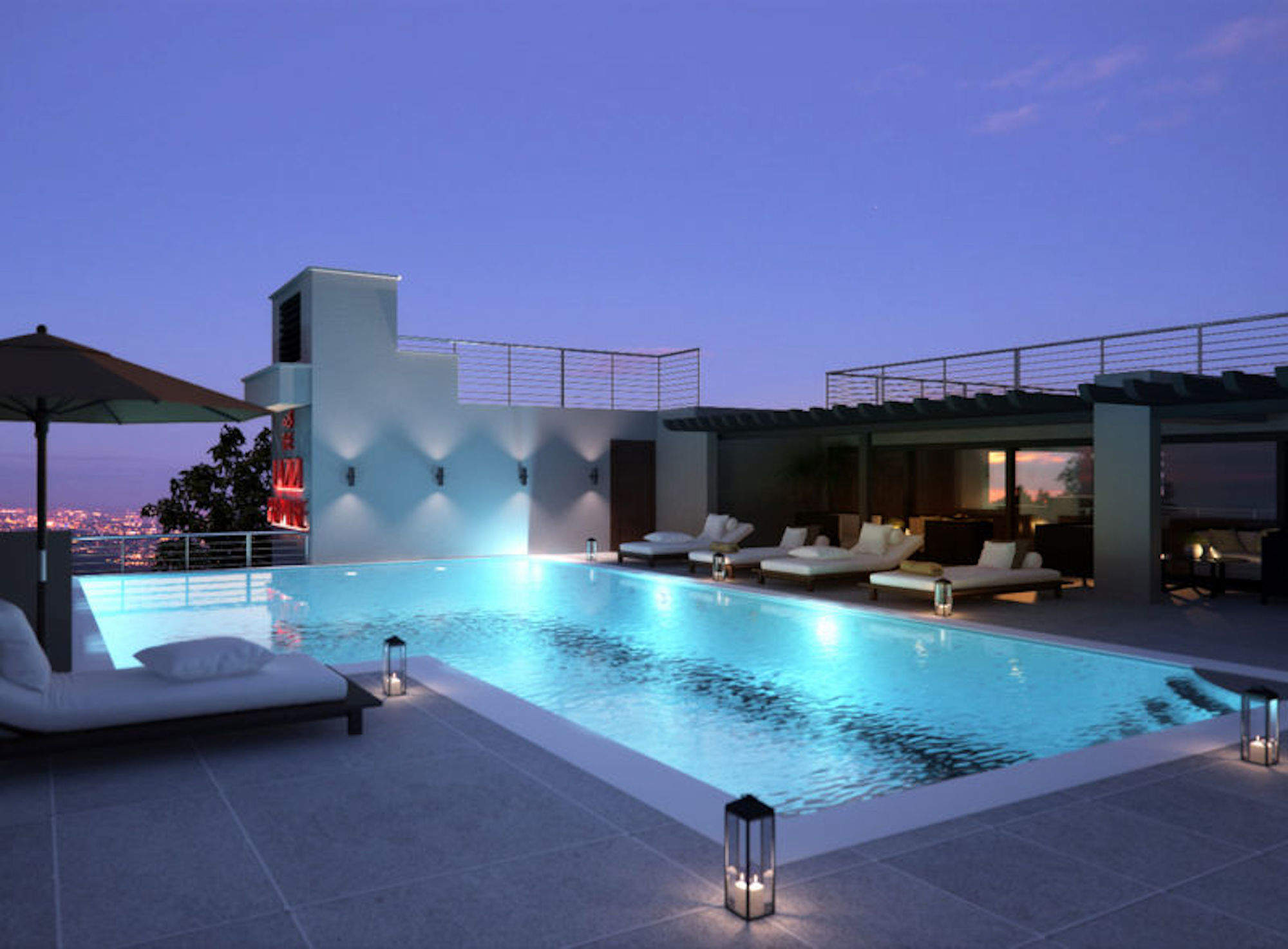
Crowne Plaza Nbi Apt
The Crowne Plaza Nairobi Airport (formerly known as the Lazizi Premiere and now part of the InterContinental Hotels Group) is the oldest hotel at Nairobi International Airport.
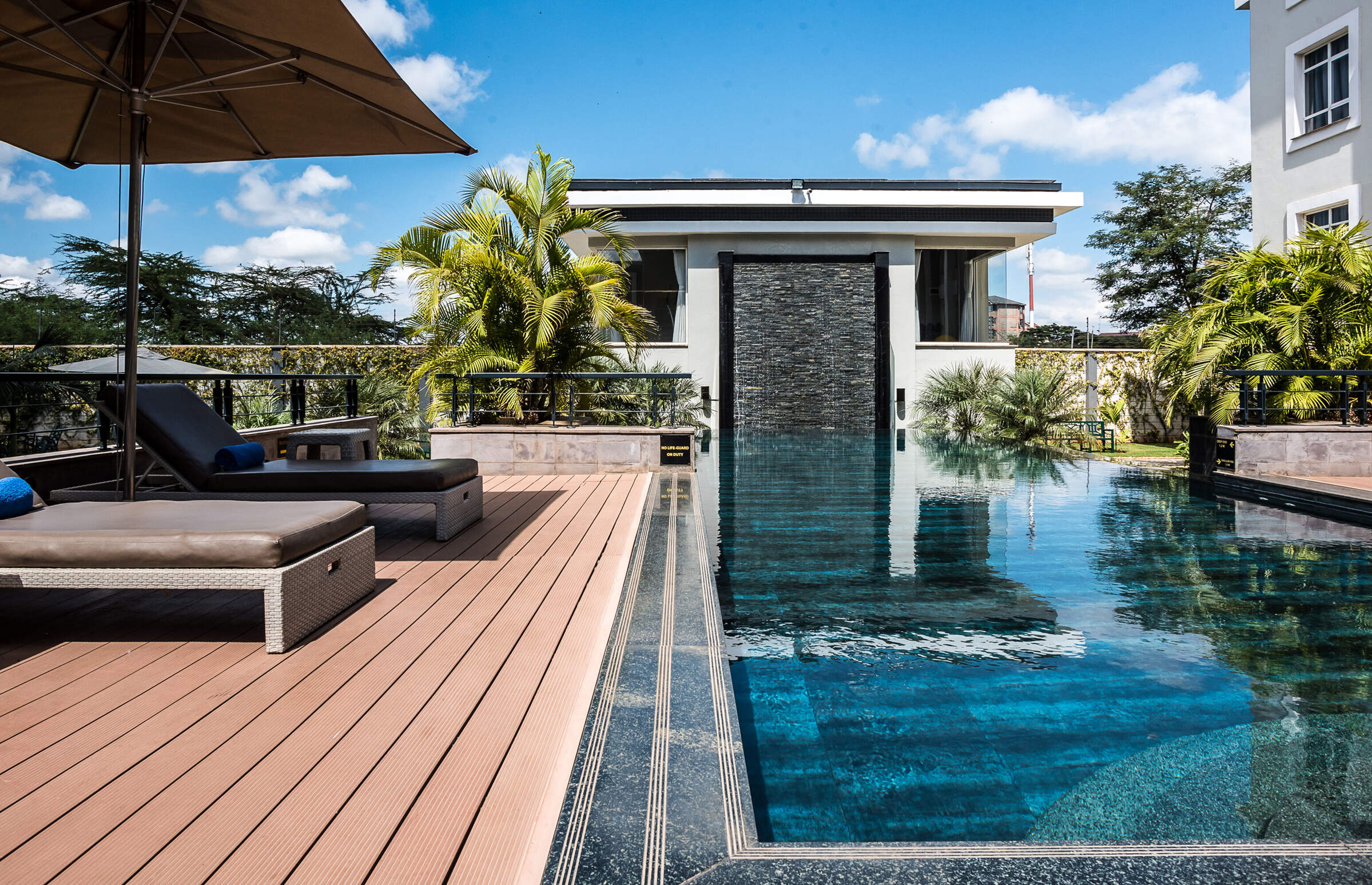
Eka Hotel
The Eka is an affordably priced business-class hotel in a relatively convenient location between Nairobi International Airport and Wilson Airport.
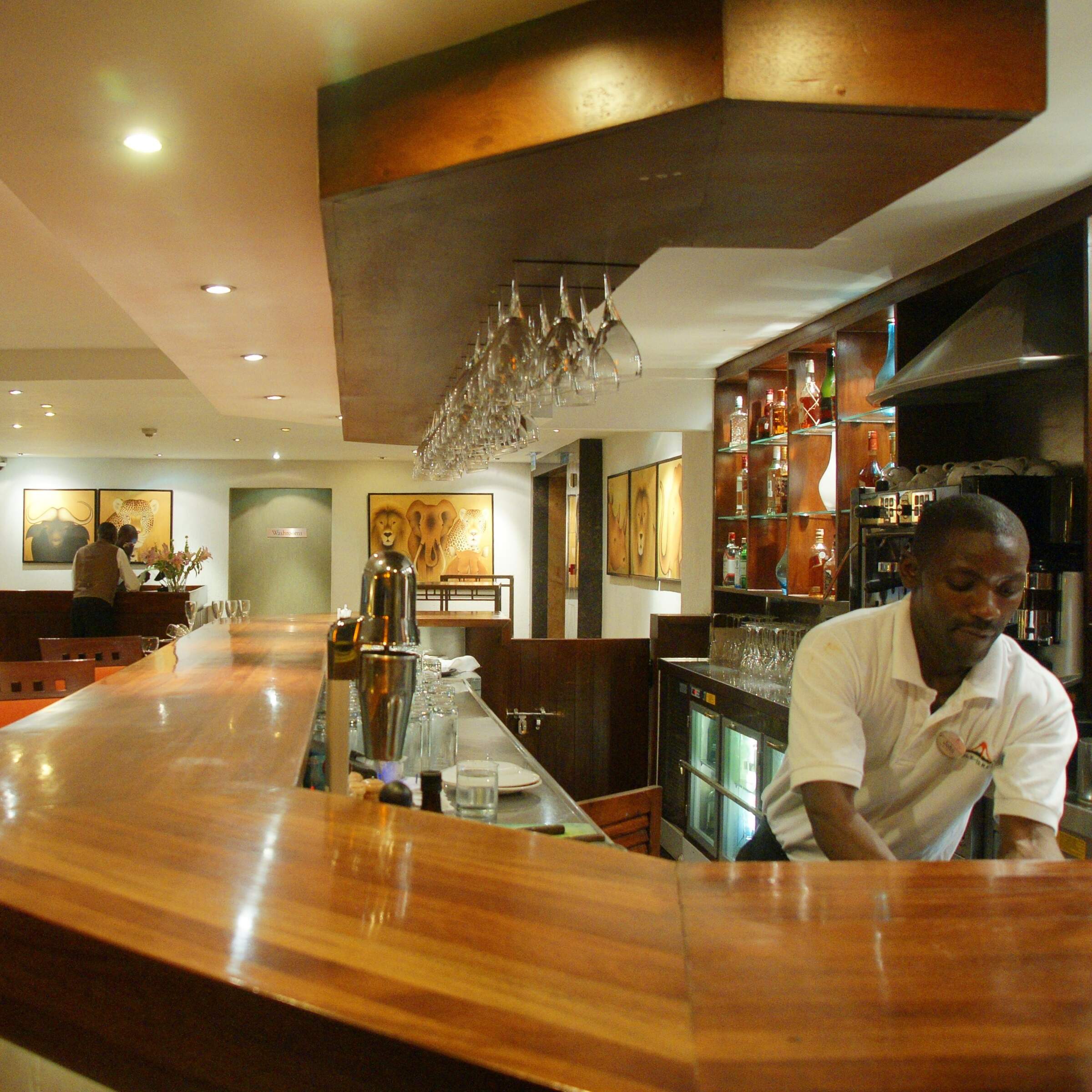
Ole-Sereni
The Ole-Sereni is a modern, stylish hotel neighbouring Nairobi National Park and located 6km from Wilson domestic airport.
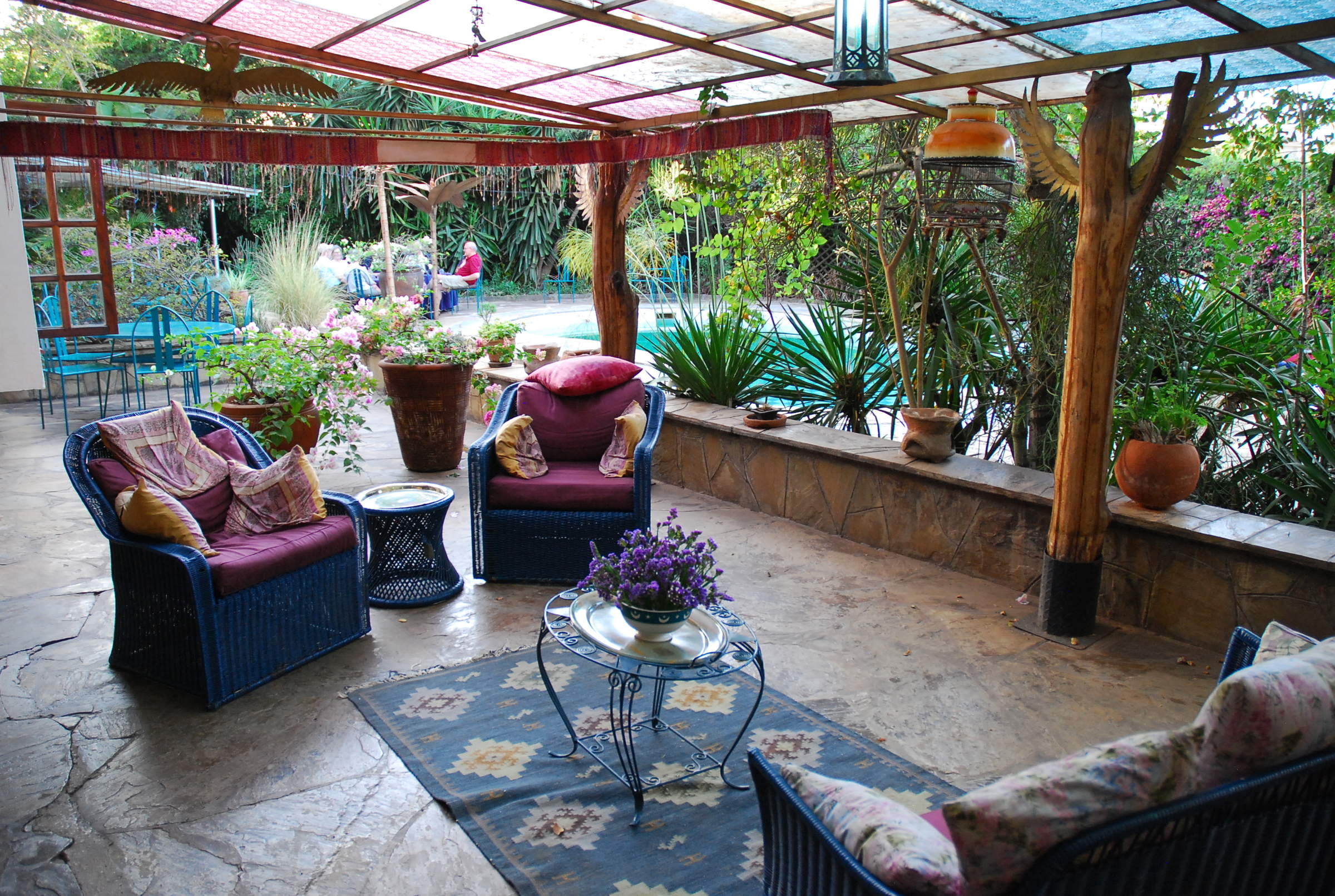
Macushla House
Macushla House is a very pleasant, small, owner-managed bed and breakfast hotel in a leafy part of southwest Nairobi, very convenient for visiting the Giraffe Centre and Sheldrick's Elephant Orphanage.
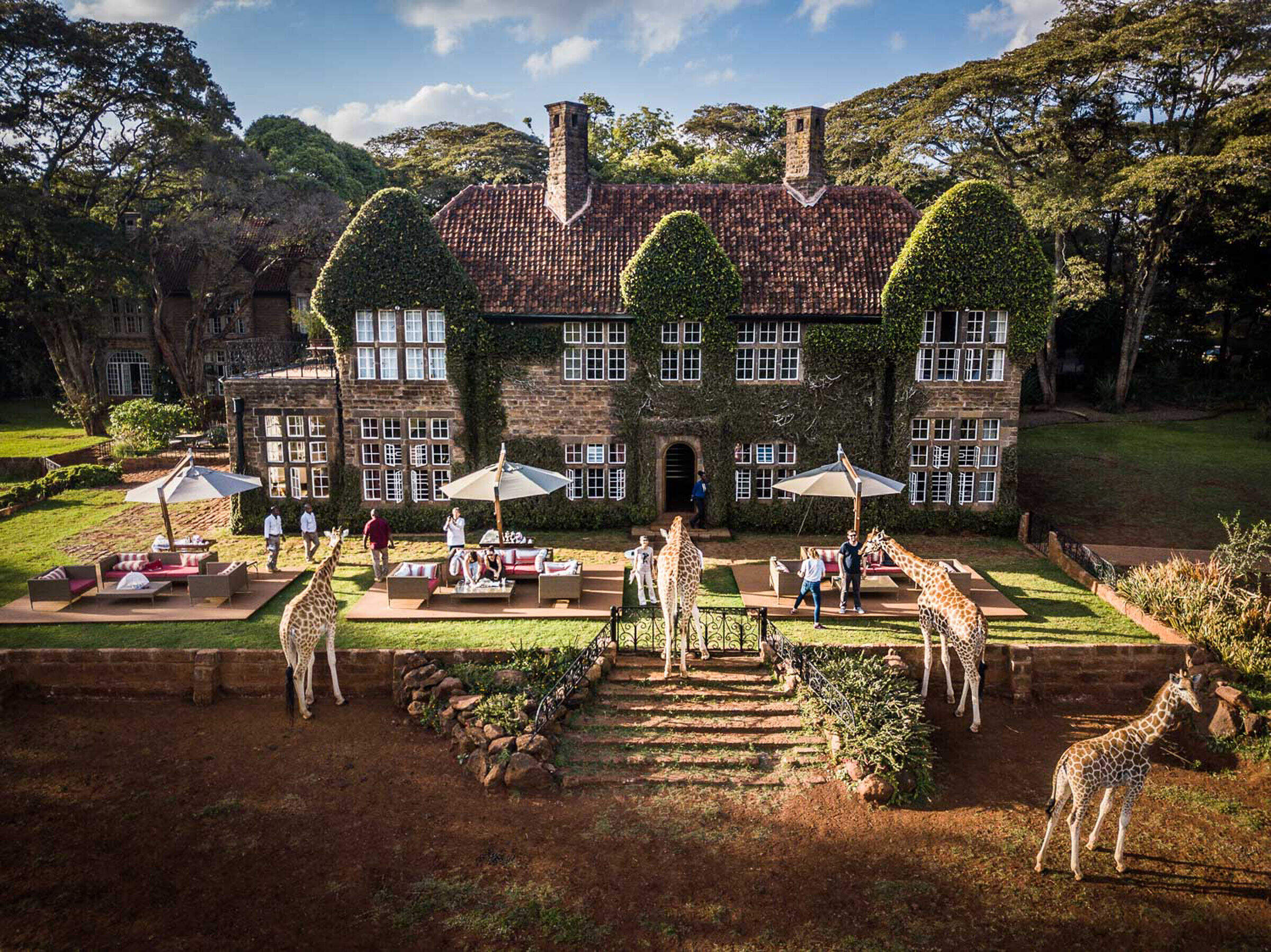
Giraffe Manor
Giraffe Manor is a unique, perennially popular lodge on the outskirts of Nairobi, offering up-close-and-personal encounters with the rare Rothschild giraffes that roam its extensive grounds.
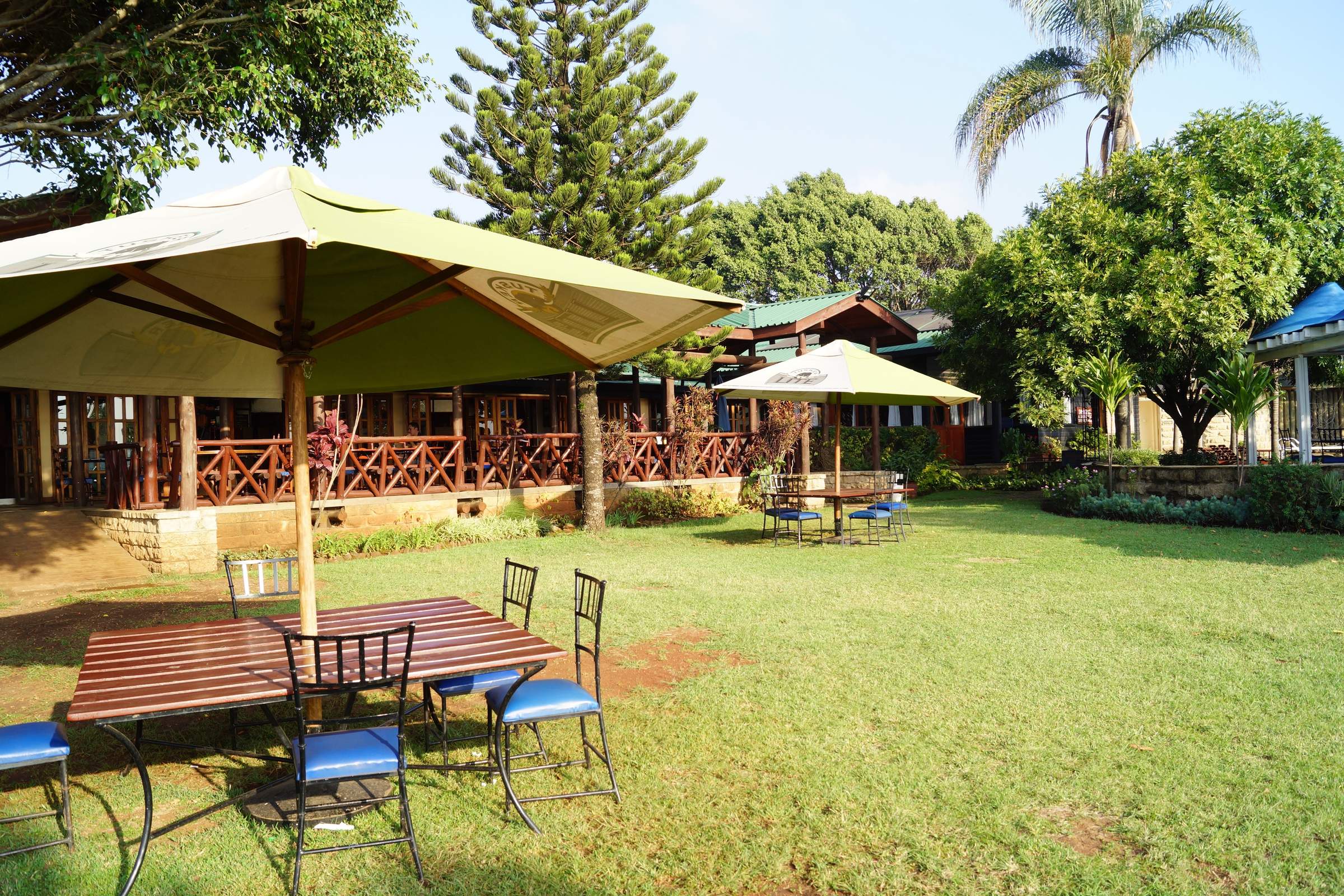
Aero Club of East Africa
The Aero Club of East Africa is a private members' club in the grounds of Wilson Airport, Nairobi, offering offering comfortable rooms and a good restaurant, bar and swimming pool to non-members.
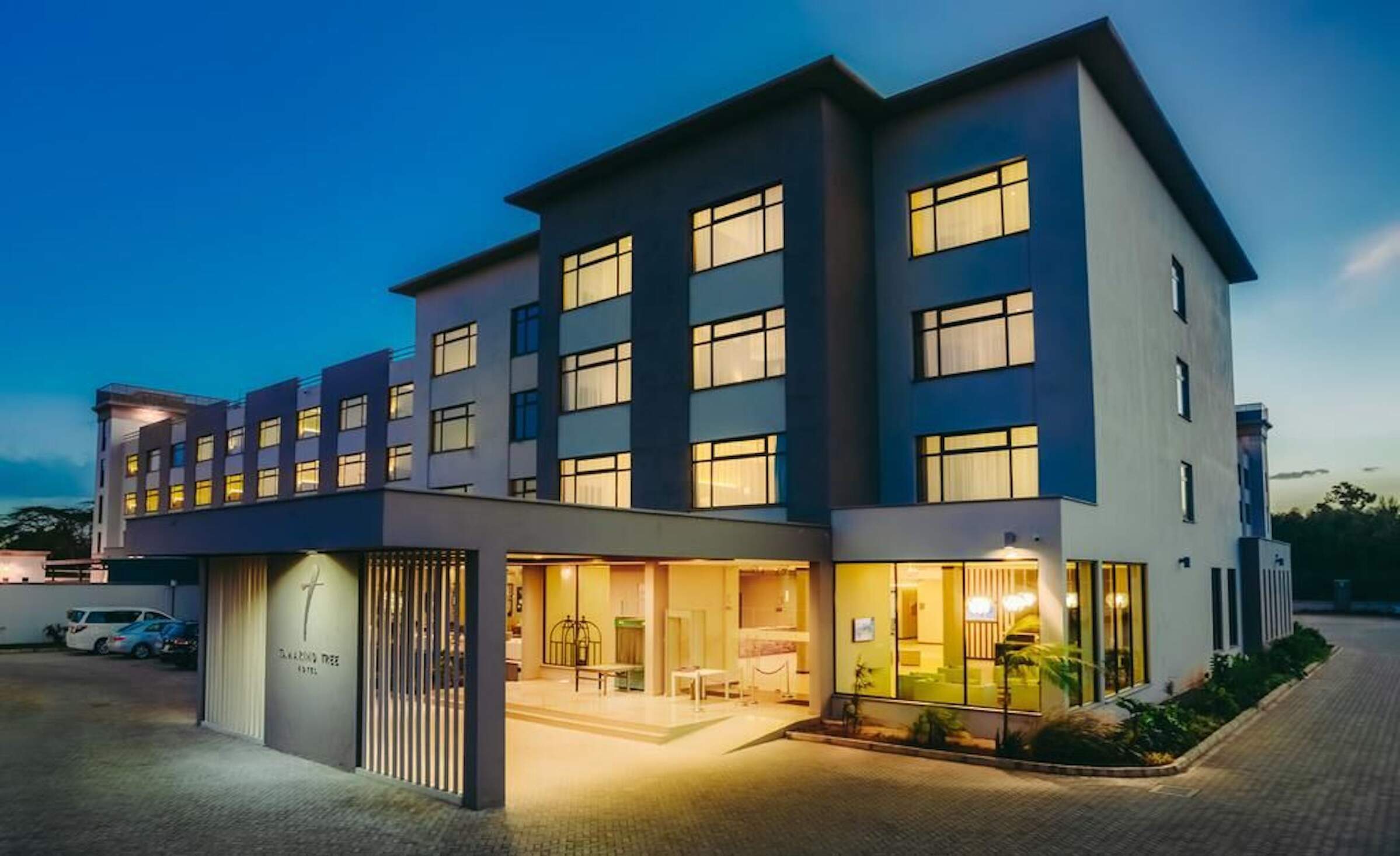
Tamarind Tree Hotel
The Tamarind Tree is a stylish international hotel in a great location next to Wilson Airport.
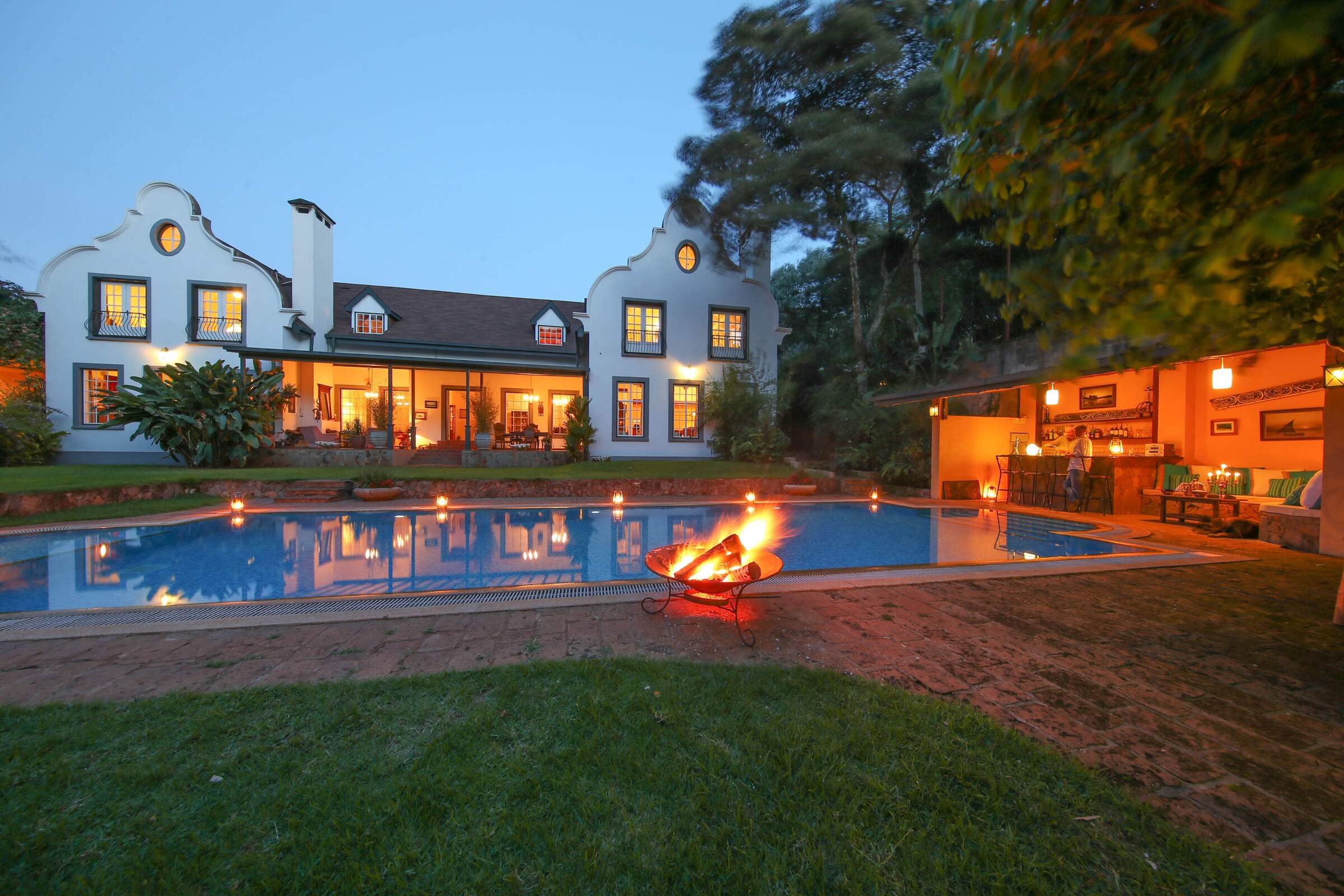
Karen Gables
Karen Gables is a small, high quality hotel in Nairobi with expansive gardens and only seven rooms.
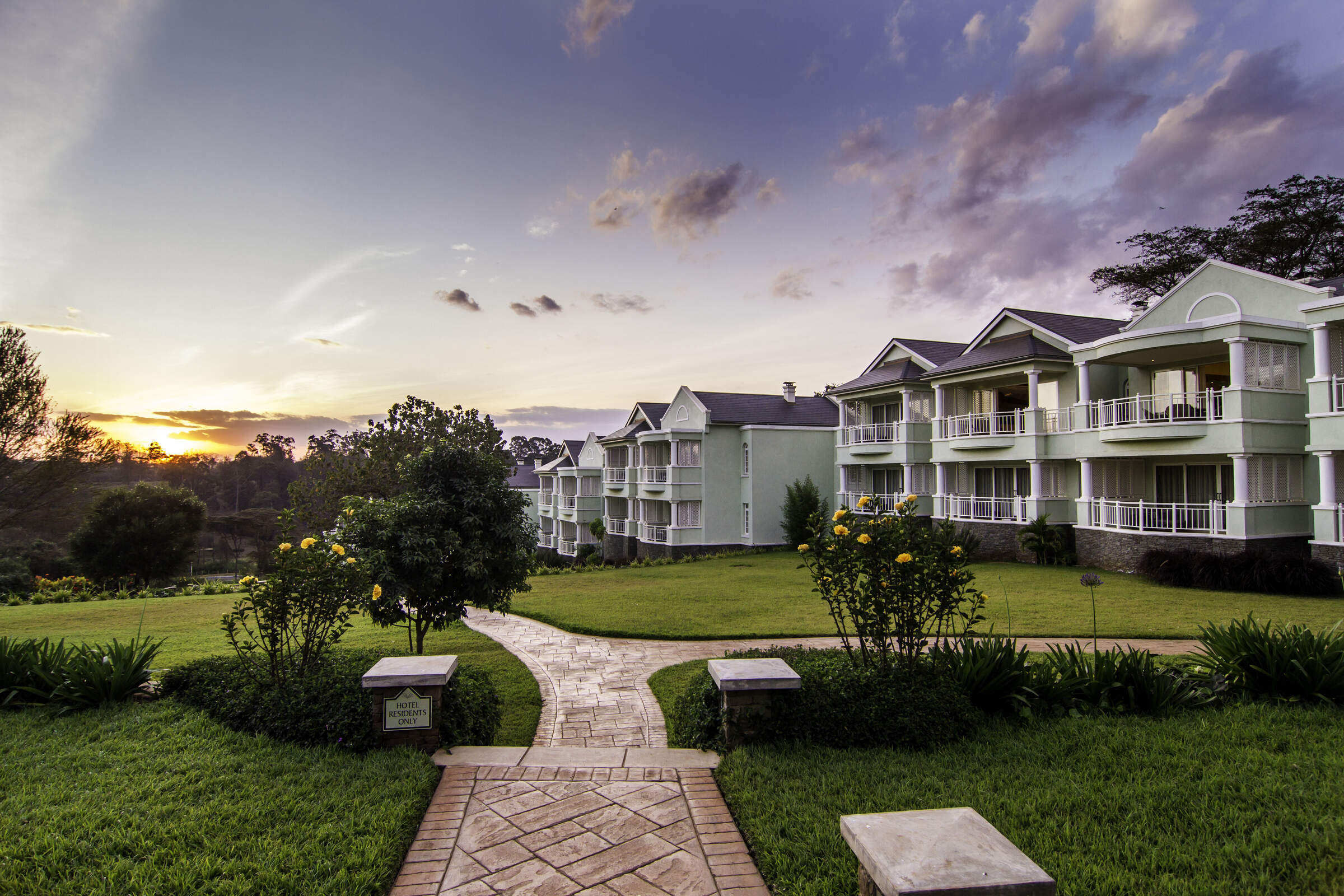
Hemingways Nairobi
Hemingways Nairobi is a luxury country-house style hotel, with a spa and gym, in the wealthy suburb of Karen.
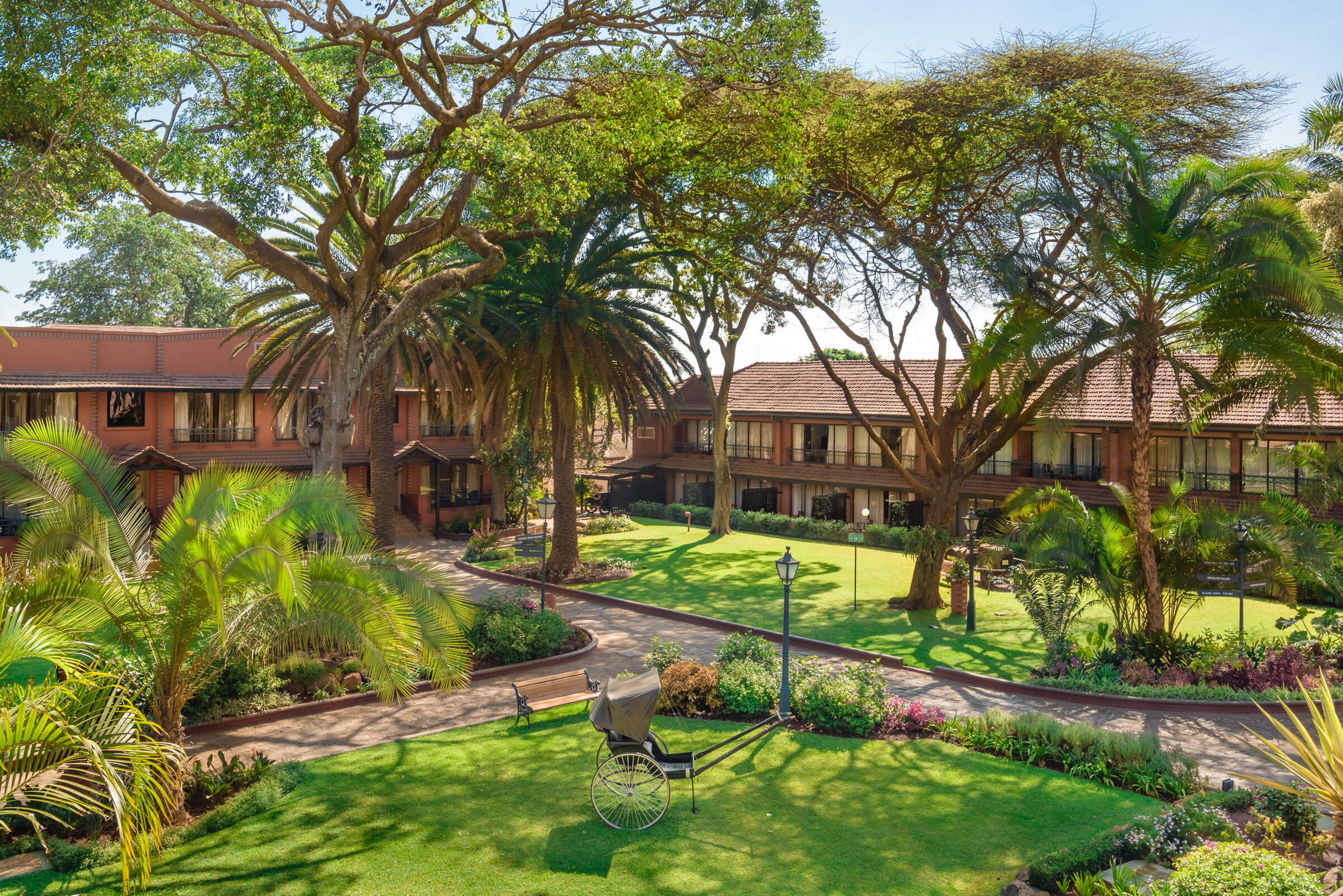
The Norfolk Hotel
The Norfolk Hotel is one of the oldest hotels in Nairobi and has a reputation for its colourful history dating back to 1904.

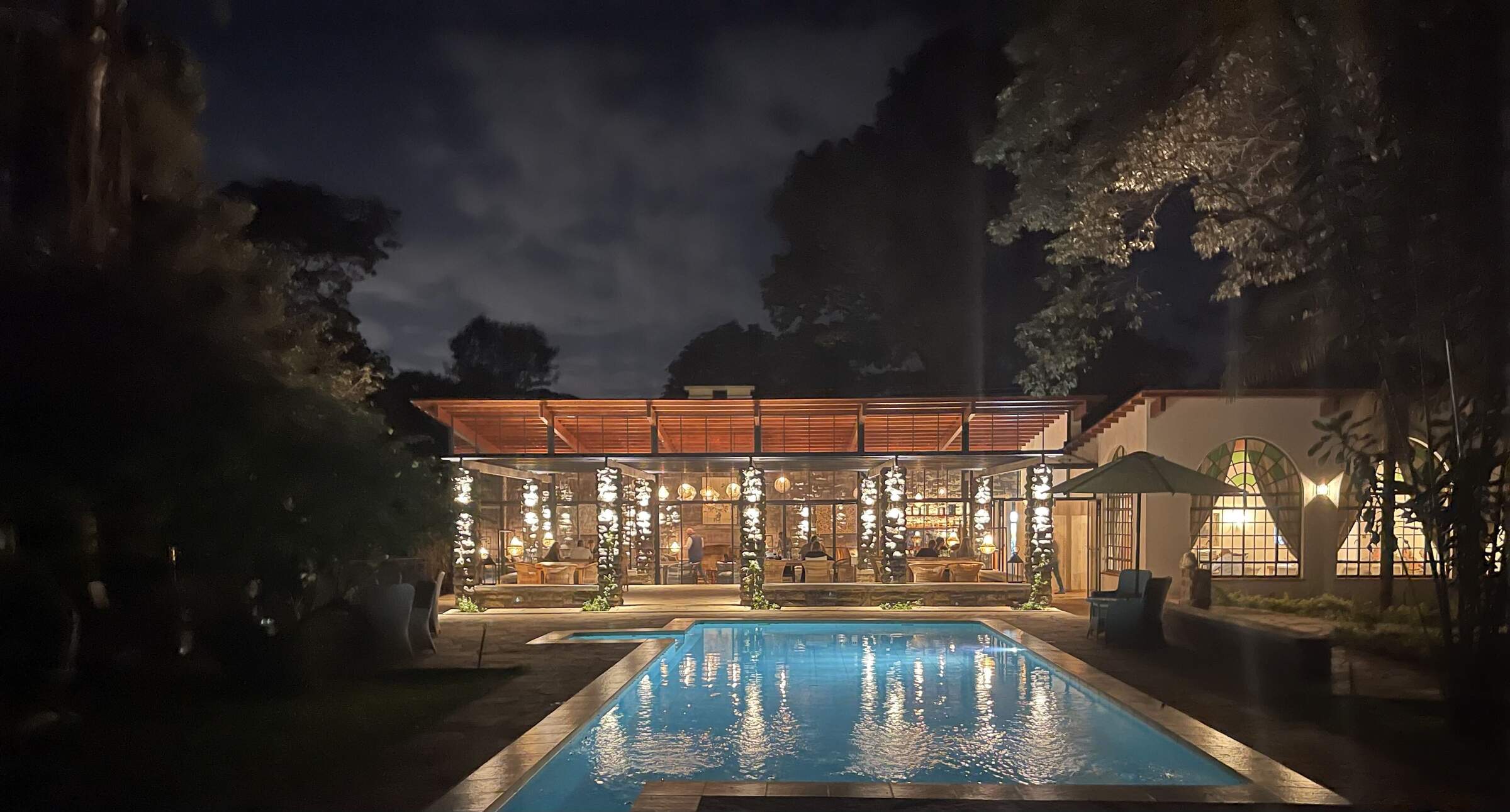
Karen Blixen Coffee Garden and Cottages
Karen Blixen Coffee Gardens and Cottages is small luxury boutique hotel located in the peaceful suburb of Karen.
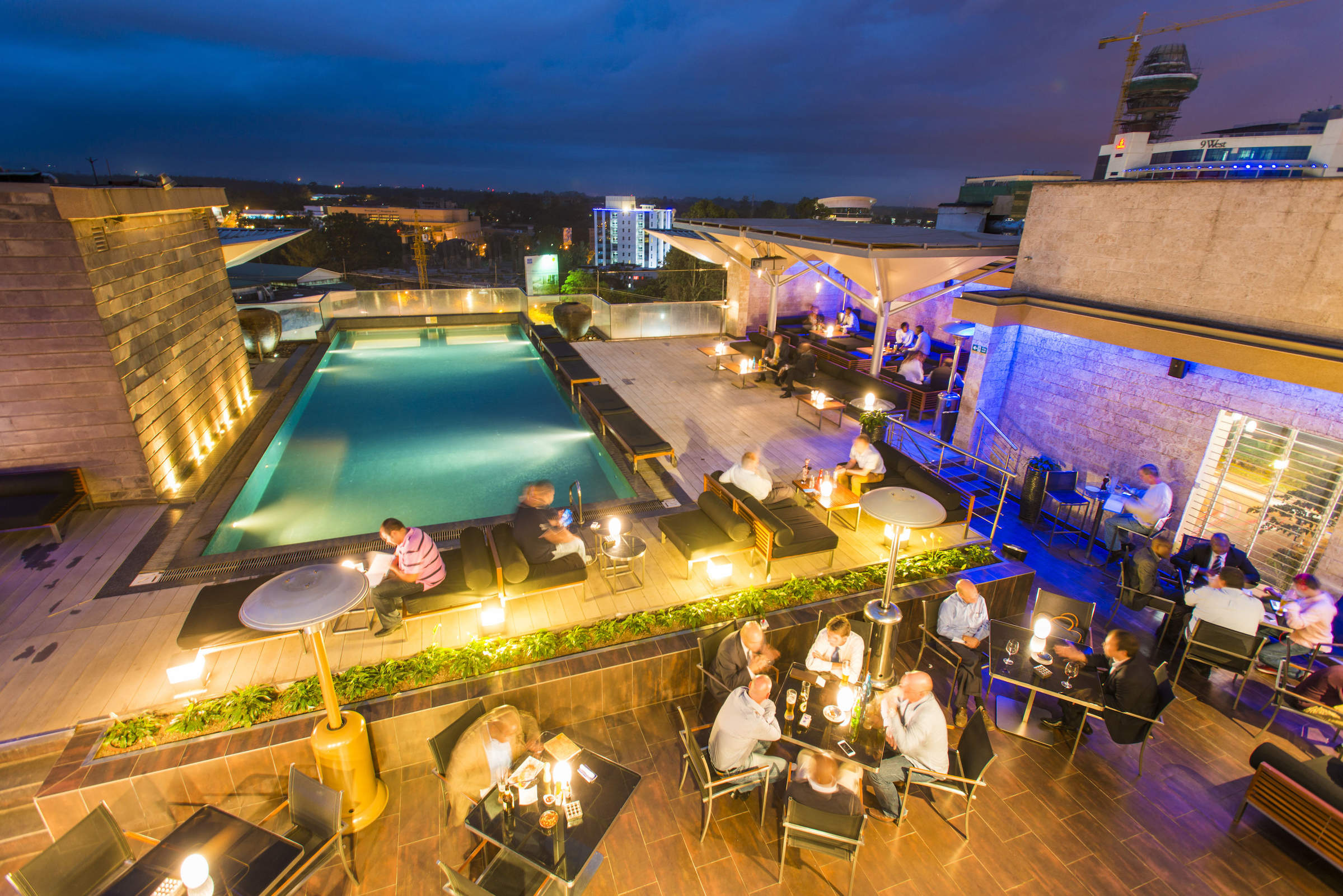
Sankara
Sankara is a strikingly built hotel in the bustling central Nairobi suburb of Westlands, primarily used as a business stay, with very good dining and leisure facilities.
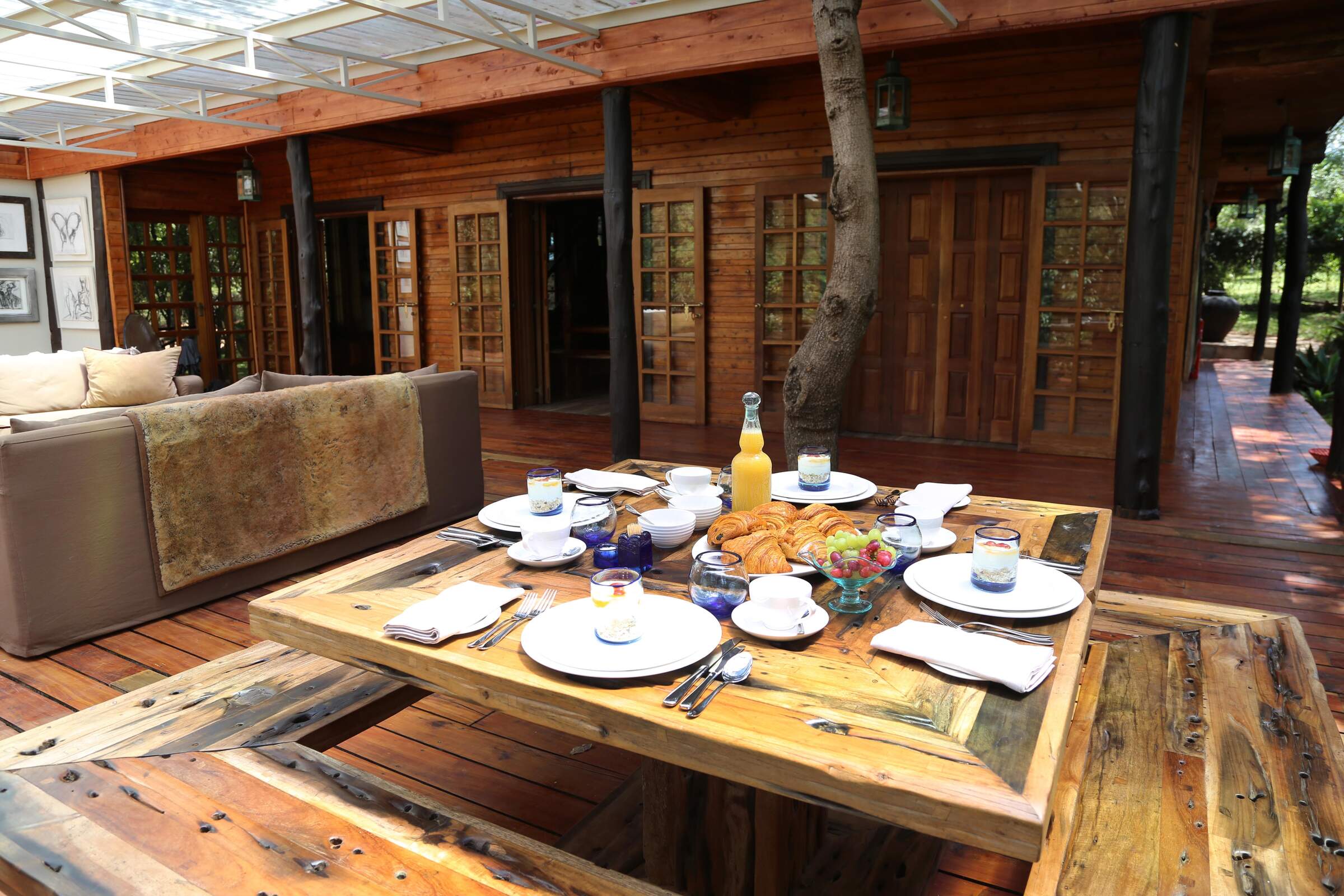
Eden Nairobi
One Forty Eight is a very stylish boutique hotel in one of the leafiest corners of the southwest Nairobi suburb of Karen-Langata. The Giraffe Centre at Giraffe Manor is just a 10-minute walk away.
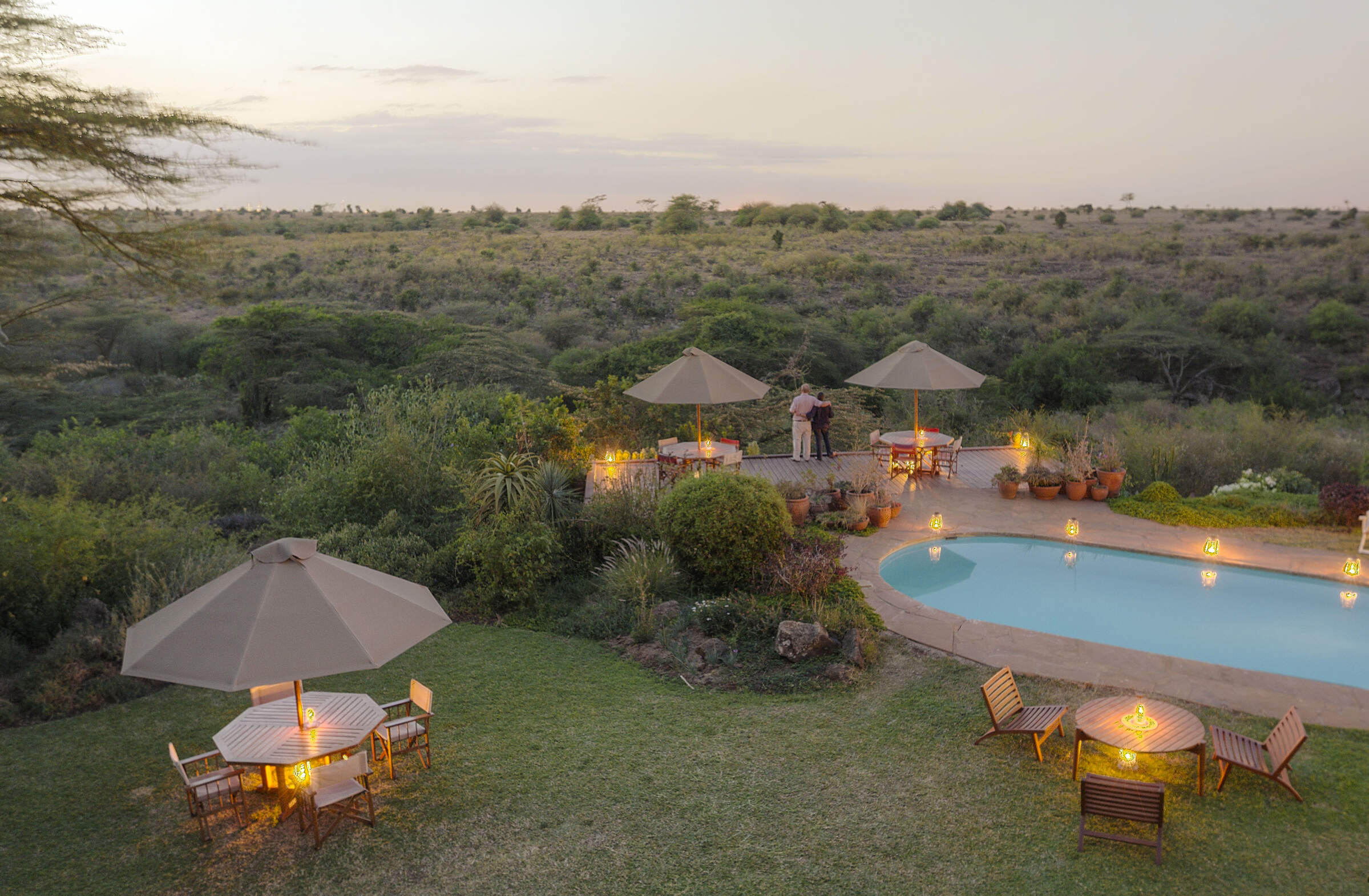
Ololo Safari Lodge
Ololo Safari Lodge and Farm is a luxury property on the southern edge of Nairobi National Park.
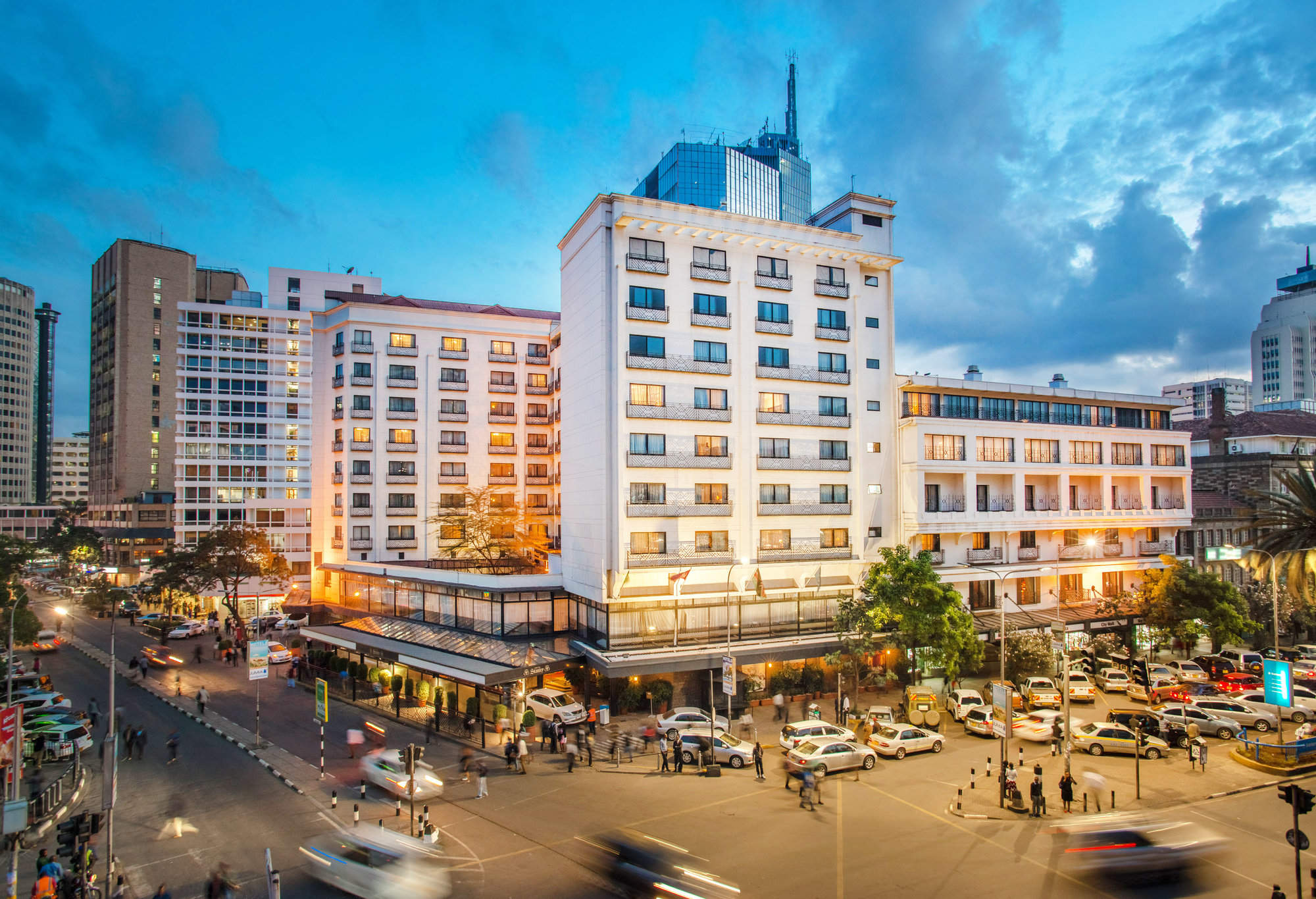
The Stanley
The Stanley is a large, traditional hotel – the oldest in Nairobi – offering a range of facilities.
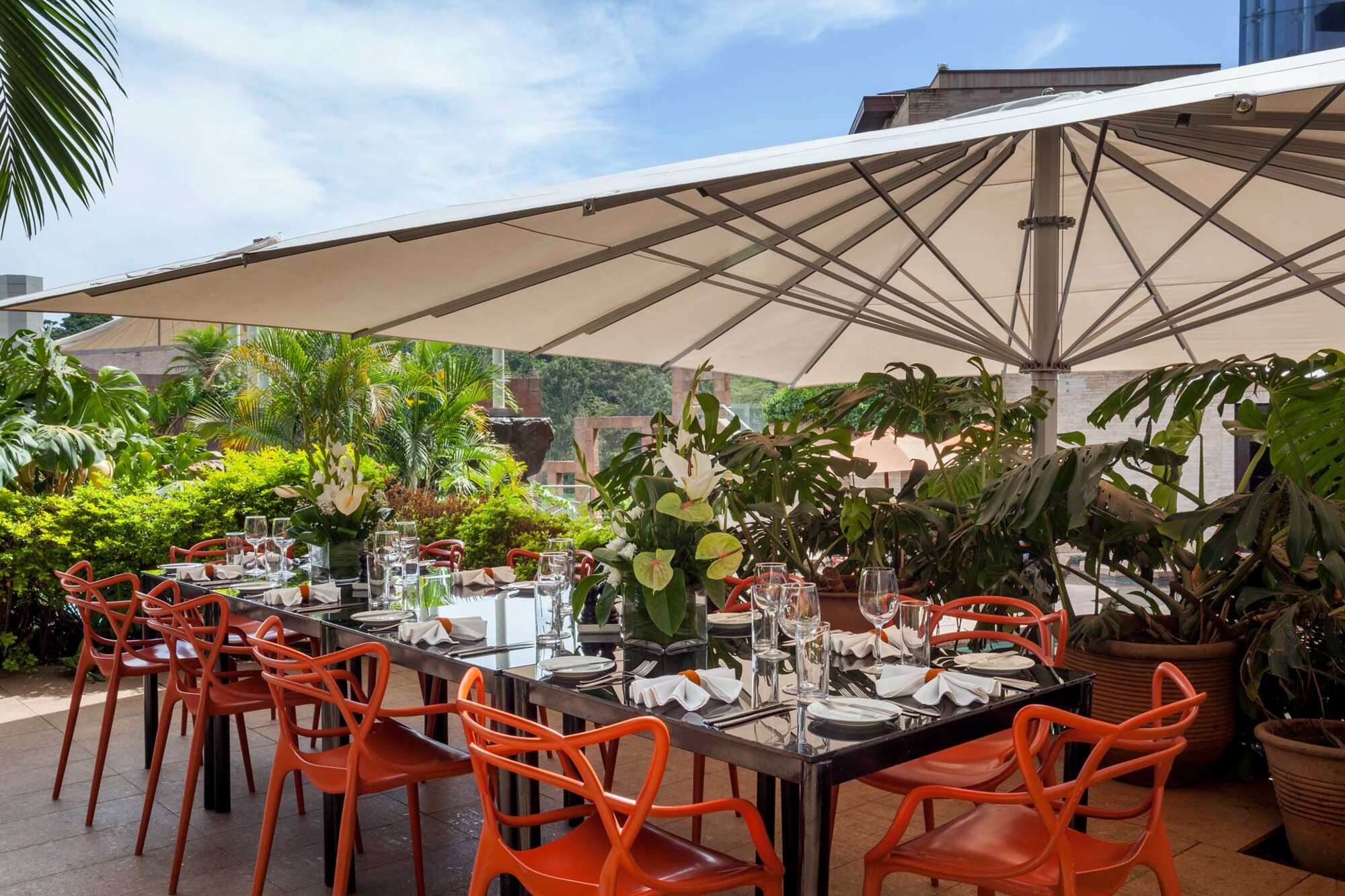
Tribe
Design-led, contemporary hotel in the Village Market area of Gigiri, a largely diplomatic and luxury residential suburb 10km north of Nairobi’s central business district.
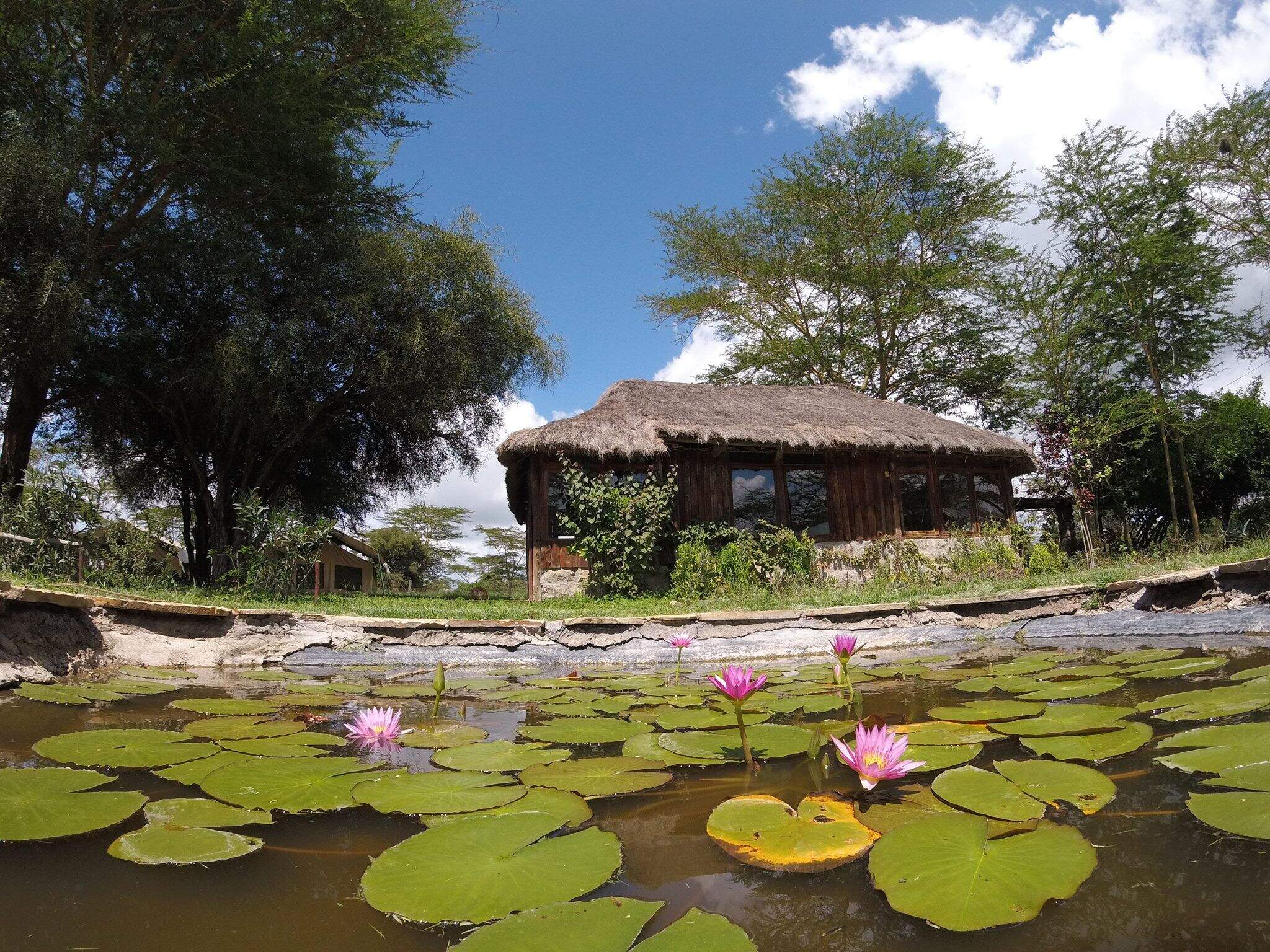
Acacia Camp
Acacia Camp is a rustic and affordable safari camp in a wildlife sanctuary a 30-minute drive towards Mombasa from Nairobi’s international airport.
When to go to Nairobi
Our month by month guide: What it's like to visit Nairobi Tented Camp in Nairobi
Jan
Feb
Mar
Apr
May
Jun
Jul
Aug
Sep
Oct
Nov
Dec
Kenya in January
Clear, hot days and warm nights make this high season a popular time for safaris and it’s also good for diving and snorkelling as water clarity is excellent and gets better as the dry season progresses. Most lodges and tented camps treat January after the New Year week is over, as mid-season, making it a good compromise in terms of value for money with reasonably reliable, dry weather and some greenery left in the landscape.
Expert Africa bases its description of climate and weather in January, like the other months of the year, on the climate records of roughly the last 100 years, and it's fair to say that the weather and seasons since the beginning of this century have been highly irregular and unpredictable.
- On average, January is the second driest month of the year
- Elephants dig waterholes in the dry riverbed in the Samburu reserve.
- Wildebeest and many antelope have their calving season, to February.
- Migrant birds are seen in huge numbers, especially in the Rift Valley.
- Sea water clarity around the coral reefs generally good.
Our view
Fantastic: the very best time to visit
Weather in January
Kenya in February
With the short dry season well established, the grass grazed down and wildlife gathering close to water points, this is still a good time for a safari. Good water clarity in the Indian Ocean's coastal waters makes for excellent diving and snorkelling conditions.
Expert Africa bases its description of climate and weather in February, like the other months of the year, on the climate records of roughly the last 100 years, and it's fair to say that the weather and seasons since the beginning of this century have been highly irregular and unpredictable.
- On average, February is the driest month of the year.
- It’s sometimes possible to swim with whale sharks at Diani Beach.
- Migrant birds are still seen everywhere, especially near water.
- This is usually peak calving season for wildebeest and many antelopes.
- This month is often the hottest of the year, especially on the coast.
Our view
A very good time to visit
Weather in February
Kenya in March
Hot, increasingly humid weather – with good diving and snorkelling conditions at the start of the month – gives way to rains and lower accommodation costs. Expert Africa bases its description of climate and weather in March, like the other months of the year, on the climate records of roughly the last 100 years, and predicting the seasons since the beginning of this century has been difficult.
March is the month when – traditionally – intensely hot conditions build up until a cloudburst finally happens at the end of the month or in early April, to relieve the humidity. As ever, regional variations across the country can greatly impact on visitors' experiences.
- Sea-water clarity is best for diving before the long rains start.
- Visitor numbers are low, though the Easter holidays can be busier.
- Night skies can be scintillatingly clear in early March.
- Cropped down savannah grasses can make it easier to see the wildlife.
- Temperartures climb high, especially at lower elevations.
Our view
A good time to visit, with pros & cons
Weather in March
Kenya in April
April sees the full onset of the southeast monsoon wind or kusi, which heralds the long rains. Temperatures drop soon after the rains are established and you’ll often have facilities largely to yourself in this more affordable low season, sometimes known as the "green season". The bush quickly springs to life, with greenery sprouting almost before your eyes. While you're likely to get a fair number of heavy showers, the breaks in the rain can yield sparklingly clear conditions.
With the dust settled and bright sun piercing the clouds, conditions can be sublime for photography, especially first thing in the morning or in the late afternoon with another storm brewing. You may be lucky, or you may find conditions very wet and muddy.
- A wet month, the coast often gets more than 300mm (12in) of rain.
- Sunny spells can provide great light for photography.
- Buffalo and zebra calving season often happens in this month.
- Baby crocodiles hatch, for example on Central Island in Lake Turkana.
- Palearctic migrant birds gather to fly north to breeding grounds.
Our view
A time to avoid if possible
Weather in April
Kenya in May
While game viewing can be trickier as vegetation runs riot, between the cloudbursts the colours and light are great for photography at this time of year. Expert Africa bases its description of climate and weather in May, like the other months of the year, on the climate records of roughly the last 100 years, and while it's reasonable to expect heavy rains in many parts during this month, especially on the coast, the rains don't always come evenly or in some areas come at all.
In an El Niño year, the so-called long rains that normally are established across much of the country by May can be meagre, to the despair of farmers. On the other hand in a La Niña year, the long rains can bring floods. On the coast, the monsoon winds make the climate much more predictable, with heavy rains common throughout this month.
- Frogs breed in the ponds in the Arabuko Sokoke Forest near Watamu.
- Wildebeest, impala and other grazers are in rut (the breeding season).
- Kilimanjaro looks its best as heavy rain falls as snow on the summit.
- There's a sharp peek of rainfall on the coast with many rainy days.
- Accommodation prices are uniformly low, while some camps close.
Our view
A time to avoid if possible
Weather in May
Kenya in June
The rains give way to cloudy, cooler weather, often making for comfortable conditions by the end of the month, especially in the highlands. Starting from mid-June or the beginning of July and running until the end of October, this is the high season, and accordingly has higher accommodation rates and – at least until early September – higher numbers of visitors.
While the early part of June can often be rainy on the coast, it can be a great time to go on safari, with fresh greenery, many young animals and good photographic conditions with clear air.
- The Taru Desert, inland from the coast, is carpeted with flowers.
- The Lake Turkana Cultural Festival is held in Loiyangalani.
- Madaraka Day (commemorating self rule) is 1 June.
- The annual Lewa marathon runs a course through the wildlife.
- The Diani Rules "sports" event rips up the rulebook at Diani Beach.
Our view
A good time to visit, with pros & cons
Weather in June
Kenya in July
Kenya’s “winter" season sets in (winter is a misnomer but locals feel the change), and the highlands can be rather grey. Skies are often cloudy and the days can be surprisingly cool, with an average daytime high in many highland safari areas of 15-20°C and night-time temperatures dropping below 10°C in Nairobi and the highlands. Lower parts of the country and the coast are usually warm and dry, typically reaching highs of around 25°C with lows in the high teens.
As this is the start of the high season, coinciding with the usual arrival of the wildebeest migration in the Maasai Mara, July is a busy month. Ask your Expert Africa specialist to advise on how to avoid the crowds, which is not that difficult to do.
- The wildebeest migration usually reaches the Maasai Mara in July.
- Simbi Lake (Kisumu) and Crater Lake (Naivasha) can attract flamingoes.
- Watersports start to pick up and some surfing is possible at Malindi.
- Afternoon thunderstorms are a common feature in the Maasai Mara.
- The sea can be choppy along the coast, making diving difficult.
Our view
A good time to visit, with pros & cons
Weather in July
Kenya in August
The Great Migration fills the plains of the Maasai Mara, and school’s out, so the park roads are full of tourists – ask your Expert Africa specialist for advice on crowd avoidance tactics. Choose a private conservancy rather than a public national park or national reserve for quieter conditions.
Like July, August is generally mild and relatively dry in the safari areas, but it can be very chilly in the highlands, even in the middle of the day, and hail occasionally falls above altitudes of around 2,400m (8,000ft). Nairobi can be disappointingly overcast, with low cloud.
- Apart from Christmas holidays, this is the busiest month of the year.
- Late August sees peak wildebeest drama at the Mara River crossings.
- Coastal winds are good for kite- and wind-surfing.
- Few mosquitoes are around at this generally dry time of year.
- The annual Camel Derby takes place in the Samburu capital, Maralal.
Our view
A good time to visit, with pros & cons
Weather in August
Kenya in September
The skies clearing of cloud signals the start of hot, dry weather with little chance of rain – and, after the first few days of the month, far fewer visitors – making the latter part of September a good time for a quieter safari. While early September is often good for dramatic migration crossings along the Mara River, you might consider deliberately postponing your trip until later in the month, when the migration can still be very impressive and visitor numbers fewer.
If tourist surges are somewhat predictable, however, the patterns of the wildebeest migration are more volatile, and like all of Expert Africa's climate and weather assessments, they are based on accumulated years of experience rather than guaranteed certainty.
- This is still high season, with prices to match.
- Many river crossings take place on the Mara river in both directions.
- Natural bush fires flush out insects and small animals for predators.
- The Rift Valley Music Festival takes place by Lake Naivasha.
- With school holidays over by early September, late-month is quieter.
Our view
Fantastic: the very best time to visit
Weather in September
Kenya in October
Still hot, mostly dry and not too busy, this is many people’s preferred month for a safari, and it’s also good for diving and snorkelling. The wildebeest and zebra herds of the great migration are often still to be seen, though in dwindling numbers. The swamps of Amboseli attract thirsty wildlife including large herds of elephants.
While we wouldn't expect much rain across most of the country this month, the climate has become so unpredictable that you can never say never, and the possibiity of the short rains – usually associated with November to mid-December, starting early, can't be discounted.
- This month sees the tail end of the great migration in the Mara.
- Palearctic migrant birds start to arrive, staying until March.
- Turtle nests hatch at Watamu, until November.
- Amboseli elephants focus on the swamps for their daily water.
- The Indian Ocean monsoon winds turn from southeast to northeast.
Our view
A very good time to visit
Weather in October
Kenya in November
The northeast monsoon wind or kaskazi heralds the start of the “short rains", usually some time in the second half of the month. From November to mid-December, this is the low season, and accordingly has lower accommodation rates and lower visitor numbers. Across most of the country you can expect warm, somewhat cloudy weather, with occasional heavy showers and localised flooding.
Expert Africa bases its description of the climate in November, like the other months of the year, on the records of roughly the last 100 years, and it's fair to say that the seasons since the beginning of this century have been highly irregular and unpredictable: some years the short rains don't come at all, or don't reach every part of the country. In an El Niño year, the November short rains can be very heavy, but in a La Niña year, they can fail completely.
- Swimming with dolphins in Lamu can be done from now until April.
- Birders gather at Ngulia in Tsavo West to ring Palearctic migrants.
- The Lamu Cultural Festival takes over the town and Lamu Creek.
- Agricultural shows often take place regional market towns.
- This is low season, so camps can be great value, with special offers.
Our view
A good time to visit, with pros & cons
Weather in November
Kenya in December
In a typical December, the rains usually finish by middle of the month, leaving the landscape looking its best, under clear blue skies, and heralding the start of the second peak tourist season from around 20 December to the first week of January. Our assessment of the likely weather in December, like the other months of the year, is based on climate records, and it's fair to say that the seasons since the beginning of this century have been highly irregular and unpredictable.
Christmas can sometimes be wet, but most years the rains have finished a week or two earlier, with the festive season ushering in the perfect combination of clear skies and sunshine by day and starry nights.
- Christmas and New Year are busy, with the lodges and camps full.
- Rates are highest after 24 Dec, with supplements on public holidays.
- Republic Day and Independence day are celebrated on 12 December.
- Good kite- and wind-surfing restarts, with strong northeasterly winds.
- Mango season begins, providing excitement for primates and elephants.
Our view
A good time to visit, with pros & cons
Weather in December

Looking for inspiration on where to travel next?
Visit our trip chooser to explore your options and find inspiration for your perfect African adventure
Inspire me